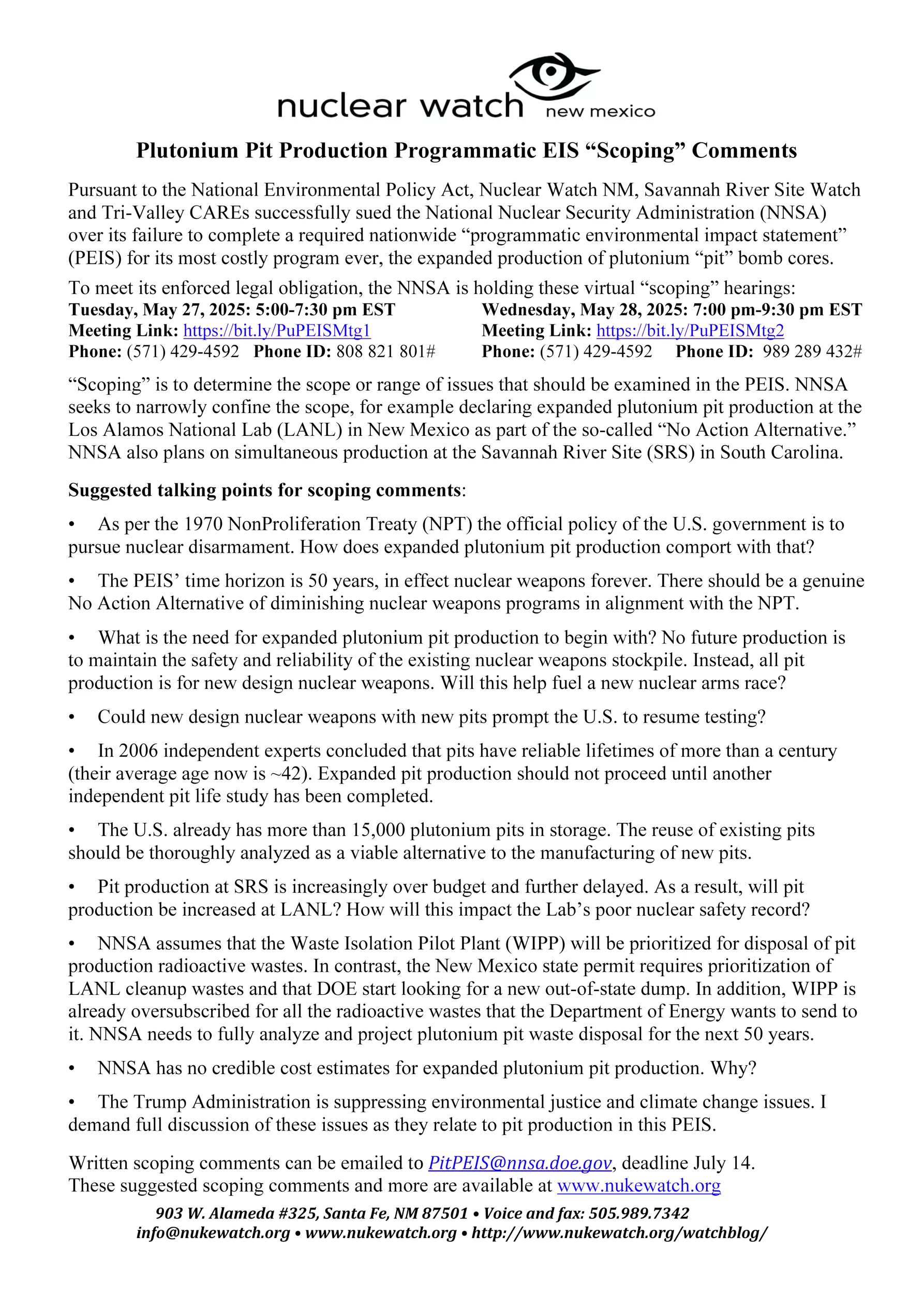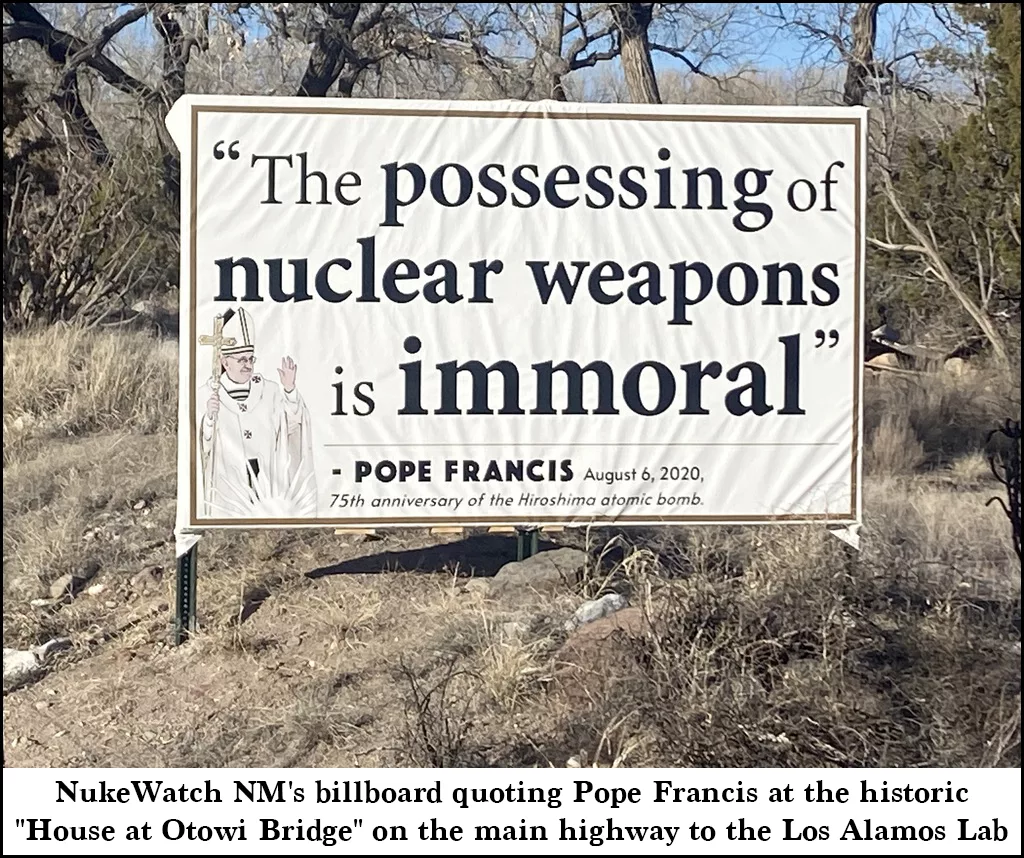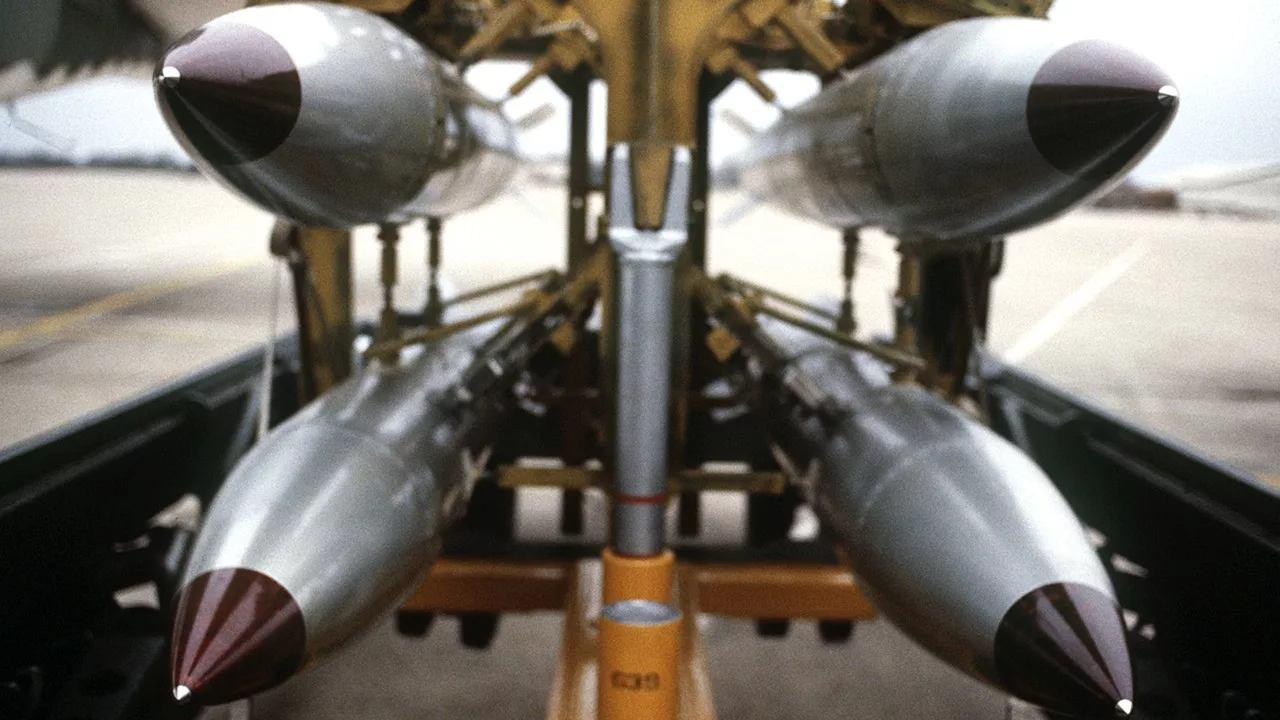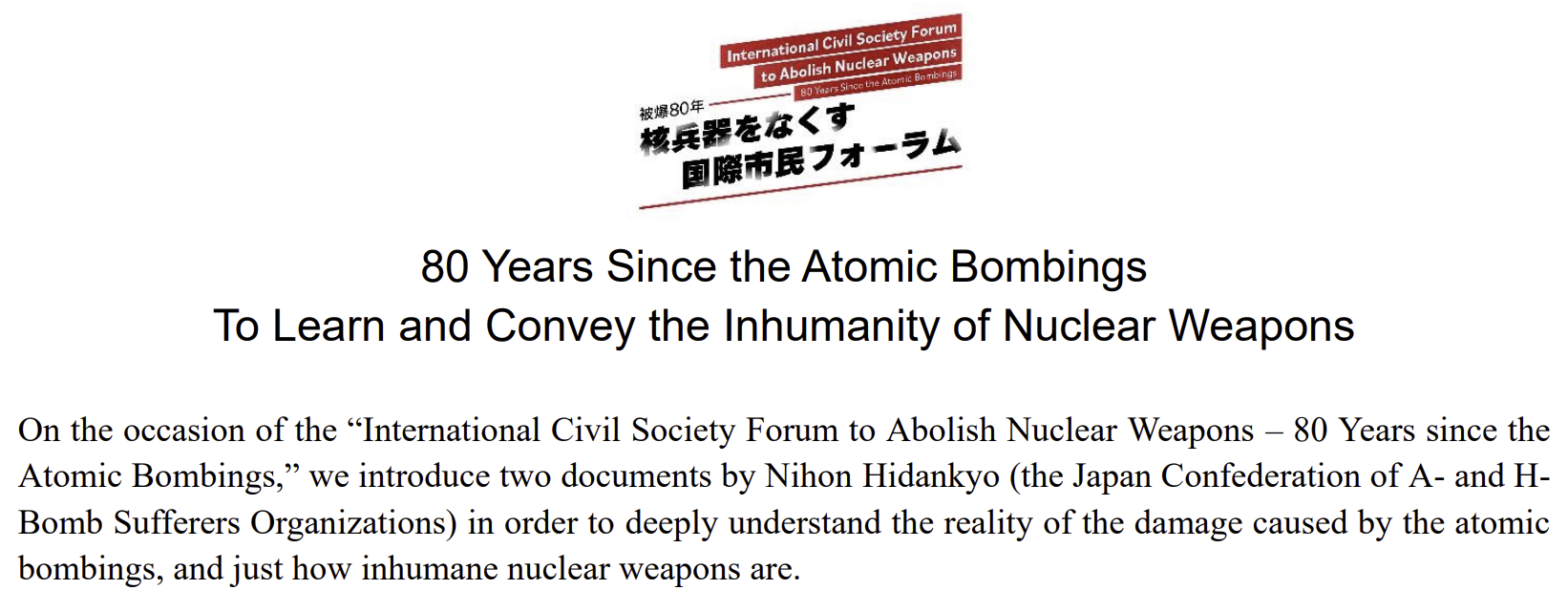Operation Crossroads: “The World’s First Nuclear Disaster”
“With Trump back in office, the recurring question of the need for nuclear weapons testing has resurfaced in the national security debate. Project 2025’s directive that the US return to ‘immediate test readiness’ raises further alarm, given the primacy of that document in Trump’s circle. The general uncertainty around current U.S. nuclear posture gives added weight to the historical importance of the atmospheric and underwater nuclear weapons tests conducted on the Bikini Atoll, recounted here by one of the leading advocates for public safety in the nuclear age. —Ed.”
By Robert Alvarez | Washington Spectator, National Security | May 29, 2025, washingtonspectator.com
Beginning in the late 1970’s, I was working for the Environmental Policy Institute around the time when atomic veterans started to descend on the nation’s capital. I would arrange meetings with Congressional offices, and the offices of both the Defense Nuclear Agency and Veterans Affairs, to enable the veterans to share their experiences and seek justice for being sent in harm’s way. About 250,000 soldiers, sailors, Marines, Coast Guard men, and airmen took part in atmospheric nuclear weapons tests from 1945 to 1963.
John Smitherman and Anthony Guarisco were 17- and 18-year-old sailors, respectively, in July of 1946, when they took part in “Operation Crossroads”—the first two nuclear weapons tests following World War II. These tests were conducted on the Bikini Atoll of the Marshall Islands and codenamed “Able” and “Baker.”
As a result of this extraordinary indifference to lethal danger, some 200 U.S. Navy ships were contaminated, and ships carrying radioactive fallout subsequently sailed to home ports in California. These ports are still being cleaned up today, nearly 80 years later. Glenn Seaborg, the chairman of the Atomic Energy Commission from 1961 to 1971, described the Baker test as “the world’s first nuclear disaster.”
Anthony and John were part of the U.S. Navy’s Pacific fleet involving 40,000 service men and 2,000 civilians. They along with others swam in the heavily contaminated Bikini Lagoon. When I met them in 1980, John was suffering from lymphatic cancer and Anthony from a severe form of spinal arthritis.
In March 1983, Anthony and his wife Mary showed up at my cluttered office and ceremoniously handed me a large stack of documents. They had just visited the UCLA library in Los Angeles and found boxes of forgotten, declassified documents belonging to Dr. Stafford Warren, the chief safety officer during both the Manhattan Project and the 1946 Crossroads tests.
Full Recording: First Scoping Hearing for NNSA’s Programmatic Environmental Impact Statement on Plutonium Pit Production
NEW Report on Plutonium Pit Production from the Union of Concerned Scientists
Today, UCS is releasing a comprehensive report on plutonium pit production. It includes a technical assessment of plutonium aging, a critical look at the weapons programs that new pits are slated for, and suggestions for alternatives, including pit re-use.
The final chapter of the study is on the human and environmental impacts of pit production and is intended as a tool for local advocacy groups to deepen their own work around issues such as the programmatic environmental impact survey that has just kicked off.
Links to the report:
https://www.ucs.org/resources/plutonium-pit-production
Spanish language executive summary:
https://es.ucs.org/recursos/la-produccion-de-nucleos-de-plutonio
Plutonium Pit PEIS Scoping Hearing Presentation: Slides and Recording
Get Prepared: A coalition of advocacy groups, including Union of Concerned Scientists, Tri-Valley CAREs, and NukeWatch New Mexico recently held a training to help participants prepare effective comments.
Watch the recording here
Password: gP=&0LYZ
Nuclear Weapons Issues & The Accelerating Arms Race: May 2025
Nuclear Weapons Budget:
• Republicans are pushing for $1 trillion per year for military spending. The fiscal 2026 budget request calls for $892.6 billion in discretionary defense funding — same as FY 2025 (and a cut given inflation). But they are also seeking $119.3 billion through budget “reconciliation.”
• Congressional Budget Office “Projected Costs of U.S. Nuclear Forces, 2025 to 2034,” April 2025:
“Costs of Current Plans: If carried out, DoD’s and DOE’s plans to operate, sustain, and modernize current nuclear forces and purchase new forces would cost a total of $946 billion over the 2025–2034 period, or an average of about $95 billion a year, CBO estimates… CBO’s current estimate of costs for the 2025–2034 period is 25 percent (or $190 billion) larger than its 2023 estimate of $756 billion, which covered the 2023–2032 period.” https://www.cbo.gov/system/files/2025-04/61224-NuclearForces.pdf
Separately it was reported that the twelve new Columbia class submarines will cost $12 billion each, three times more than their projected cost in 2010 and is years behind schedule.
Nuclear Weapons Update:
Nuclear weapons and delivery systems would get an added $12.9 billion in the new reconciliation proposal. This includes $2 billion for sea-launched nuclear cruise missiles and $400 million for their warhead.
Accelerating Arms Race
• The current conflict between India and Pakistan is dangerous.
• 4-4-25 ExchangeMonitor: https://www.exchangemonitor.com/wrap-up-russias-modern-arsenal-and-nukes-in-ukraine-deputy-secretary-of-energy-hearing-rubio-japan-and-rok-in-brussels-more/
“Russia’s top commander in Ukraine Gen. Sergei Surovikin discussed using nuclear weapons to prevent Ukraine from advancing into Crimea in the fall of 2022, the New York Times said March 29. The Times cited U.S. intelligence reports…”
Lawsuit Compels Nationwide Public Review of Plutonium Bomb Core Production
AIKEN, S.C. — Today the National Nuclear Security Administration (NNSA), the semi-autonomous nuclear weapons agency within the Department of Energy, published a formal Notice of Intent in the Federal Register to complete a nationwide “programmatic environmental impact statement” on the expanded production of plutonium “pit” bomb cores. Pits are the essential radioactive triggers of modern nuclear weapons. The NNSA is aggressively seeking their expanded production for new-design nuclear weapons for the new nuclear arms race.
The South Carolina Environmental Law Project (SCELP) successfully represented the Gullah/Geechee Sea Island Coalition and Nuclear Watch New Mexico, Savannah River Site Watch and Tri-Valley Communities Against a Radioactive Environment in a legal challenge to NNSA’s attempt to improperly jump start dual site pit production. On September 30, 2024, United States District Court Judge Mary Geiger Lewis ruled that the NNSA had violated the National Environmental Policy Act (NEPA) by failing to properly consider alternatives before proceeding with its plan to produce at least 30 pits per year at the Los Alamos National Laboratory (LANL) in New Mexico and at least 50 pits per year at the Savannah River Site (SRS) in South Carolina.
NNSA issues plans to assess pits environmental impact
“This programmatic environmental impact statement that we fought long and hard for empowers citizens to tell policy makers what they think about decisions being made in their name,” Jay Coghlan, from environmentalist group Nuclear Watch New Mexico, said Thursday in a press release by the plaintiffs of the case. “Let them know what you think about the $2 trillion ‘modernization’ program to keep nuclear weapons forever while domestic programs are gutted to pay for tax cuts for the rich.”
By ExchangeMonitor | May 9, 2025 exchangemonitor.com
On the heels of a federal judge’s ruling last fall, the Department of Energy’s National Nuclear Security Administration formally announced plans Friday for a detailed review of environmental impacts of planned plutonium pit production.
DOE’s semi-autonomous National Nuclear Security Administration (NNSA) announced in the Federal Register it is kicking off a programmatic environmental impact statement EIS to ensure that large-scale pit production will comply with the National Environmental Policy Act (NEPA).
According to the Federal Register notice, NNSA will hold public meetings and public hearings as part of the process.
Two online public scoping meetings are now scheduled for May 27 and May 28. The May 27 session would commence at 5 p.m. Eastern Time while the May 28 one is scheduled to start at 7 p.m. Eastern. Both can be accessed online or by phone. Details can be found in the Federal Register notice.
A federal district judge ruled last September that DOE and NNSA did not adequately analyze the environmental effects of producing the radioactive cores that trigger nuclear weapons in two different states, but declined to put the pit program, including construction of the Savannah River Plutonium Processing Facility at Aiken, S.C.’s Savannah River Site on hold as a result. In January, the federal government and the plaintiffs, consisting of environmentalists, settled the lawsuit and agreed to leave Los Alamos National Laboratory as the sole pit factory until NNSA completes a nationwide, NEPA-compliant programmatic EIS.Continue reading
US nuclear firm ‘utterly crucial’ to national security expands East Tennessee operations
“Which company produces uranium fuel for U.S. Navy nuclear reactors and manages the only plant where the government disassembles atomic warheads? What about the company helping NASA to develop a nuclear rocket, all while building small modular reactors and developing a pilot plant to restart uranium enrichment for the military?”
By Daniel Dassow, Knoxville News Sentinel | May 5, 2025 newsbreak.com
It’s all the same answer: BWX Technologies , the $2.7 billion juggernaut better known as BWXT has embedded itself in every kind of nuclear project imaginable with a strong and growing presence in East Tennessee, where 1,100 employees at its Nuclear Fuel Services plant in Erwin “downblend” bomb-grade uranium. The facility also creates fuel for the nuclear reactors aboard U.S. Navy submarines and aircraft carriers.
The region is even more important to BWXT after it bought a specialized facility in Jonesborough and 97 acres in Oak Ridge for a centrifuge enrichment project the company says will create hundreds of jobs through millions of dollars in investments.
“We have availed ourselves as a key player in just about every interesting nuclear opportunity that you can think of,” BWXT President and CEO Rex Geveden told Knox News. “We’re all over it.”
BWXT is part of the team led by the Tennessee Valley Authority to build the first small modular nuclear reactors in the U.S. at the federal utility’s Clinch River Nuclear Site in Oak Ridge .
It will manufacture the reactor pressure vessel, the largest component of the 300-megawatt reactor designed by GE Hitachi Nuclear Energy , for small modular reactors in the U.S. and Canada.
Curb the Skyrocketing Cost of U.S. Nuclear Modernization
“Since Russia and the United States agreed 15 years ago to modest nuclear reductions under the New Strategic Arms Reduction Treaty (New START), they also have embarked on extraordinarily expensive campaigns to replace and modernize every component of their respective nuclear arsenals to maintain force levels and provide the option to build up.”
By Daryl G. Kimball, Arms Control Today | May 1, 2025 newsbreak.com
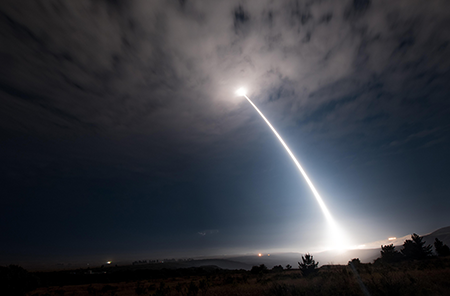
At the same time, their leaders have failed to resolve disputes about existing treaties or launch new negotiations to limit or further cut their deadly arsenals below the New START ceiling of 1,550 deployed nuclear warheads and 700 strategic missiles and bombers each.
In 2018, shortly after he withdrew the United States from the Intermediate-Range Nuclear Forces Treaty, U.S. President Donald Trump foolishly bragged about the nuclear stockpile that “until people come to their senses, we will build it up. It’s a threat to whoever you want, and it includes China, and it includes Russia, and it includes anybody else that wants to play that game.”
China has responded to U.S. nuclear and conventional military plans by pursuing a buildup of its historically “minimal” nuclear force to ensure that it retains an assured “second strike” capability. Russia has continued to develop new types of intermediate range missiles, as well as some new and exotic strategic systems designed to bypass U.S. missile defense capabilities.
Successive presidential administrations and congresses have failed to seriously consider alternatives that would have reduced costs and still maintained a devastating nuclear force.
Now, the cost of the U.S. nuclear modernization program is skyrocketing even further, siphoning resources from other more pressing human needs and national security priorities.
In April, the Congressional Budget Office issued its latest 10-year cost projection of the departments of Defense and Energy plans to operate, sustain, and modernize existing U.S. nuclear forces and purchase new forces: a total of $946 billion in the 2025-2034 period, or about $95 billion per year.
This new estimate is 25 percent, or $190 billion, greater than the last CBO estimate of $756 billion, which covered the 2023-2032 period. Incredibly, the $946 billion estimate does not include all of the likely cost growth of the new Sentinel intercontinental ballistic missile program, which the Pentagon acknowledged in July 2024 would cost 81 percent, or $63 billion, more than the program’s baseline estimate of $78 billion, generated in 2020.
Find Out the Facts & Sign the Petition: Why NMED Should Deny LANL’s Request for Tritium Releases
Why NMED Should Deny LANL’s Request for Tritium Releases
The Los Alamos National Laboratory plans to begin large releases of radioactive tritium gas any time after June 2, 2025. The only roadblock to the Lab’s plans is that it needs a “Temporary Authorization” from the New Mexico Environment Department to do so.
Reasons why NMED should deny LANL’s request are:
- The state Environment Department has a duty to protect the New Mexican As it states, “Our mission is to protect and restore the environment and to foster a healthy and prosperous New Mexico for present and future generations.” 1
- Why the rush? LANL explicitly admits there is no urgency. According to the Lab’s publicly-released “Questions and Answers” in response to “What is the urgency for this project?”
“There is no urgency for this project beyond the broader mission goals to reduce onsite waste liabilities.” 2
-
- In addition, the National Nuclear Security Administration (NNSA) admits that the end time frame for action is 2028, not 2025.3 Therefore, there is time for deliberate consideration.
- Contrary to NMED’s Resource Conservation and Recovery Act permit for LANL, the Lab has not fulfilled its duty to inform the public via NMED of possible alternatives to its planned tritium releases.4 According to Tewa Women United, “LANL has told EPA there are 53 alternatives; that list of alternatives, initially requested in 2022, has not yet been Tewa Women United has repeatedly asked LANL to provide the public with that list.” 5
University of New Mexico to host exhibit on nuclear history, technology, weapons
ALBUQUERQUE, N.M. (KRQE) — A provocative international exhibit will open soon at the University of New Mexico. “the bomb” is an immersive, multi-media installation exploring the history, technology, and threat of nuclear weapons.
By Nicole Sanders, KRQE | April 22, 2025 krqe.com
The installation includes an hour-long film projected on 45 screens conveying the hidden chaos and danger of the nuclear age. The experience is coming to UNM from April 30 to May 30. The full schedule at Zimmerman Library is available below:
- Wednesday, April 30
- Friday, May 2, 2025
- Friday, May 9, 2025
- Friday, May 16, 2025
- Friday, May 23, 2025
- Friday, May 30, 2025
Formal Comments on the Draft Site-Wide Environmental Impact Statement for Continued Operation of the Los Alamos National Laboratory
The National Environmental Policy Act requires the Los Alamos National Laboratory to periodically prepare a new “Site-Wide Environmental Impact Statement (SWEIS) for Continued Operations.”
Please use NukeWatch NM’s recent extensive comments on the Lab’s new draft SWEIS as a resource and citizens’ guide to Lab issues.
Did you know, for example, that:
• LANL’s nuclear weapons production budget has doubled over the last decade?
• The Lab’s so-called cleanup plan is to “cap and cover” some 200,000 cubic yards of radioactive and toxic waste, leaving them permanently buried as a perpetual threat to groundwater?
• There is a planned intentional release of up to 30,000 curies of radioactive tritium gas, all without a public hearing?
Use our lengthy formal comments as a starting point, toolkit or resource for dissecting ongoing and future issues at LANL!
We encourage you to use our comments to ask for follow-up info, either from us here at NukeWatch or from the Lab, and to demand better accountability and transparency! Use as background or briefing material for local and congressional advocacy.
For example:
- Cite or excerpt our comments in future public processes under the National Environmental Policy Act. For example, we are expecting that a nationwide programmatic environmental impact statement for plutonium “pit” bomb core production will be announced soon, the result of a lawsuit in which NukeWatch led.
- Share with those organizing around stopping expanded plutonium pit production and advocating for genuine radioactive and toxic wastes cleanup.
- Learn about LANL’s proposed electrical transmission line across the environmentally and culturally sensitive Caja del Rio and alternatives that were not considered.
- The National Environmental Policy Act itself is under assault by the Trump Administration. We expect environmental justice and climate change issues to be stripped from LANL’s final Site-Wide Environmental Impact Statement. This needs to be resisted!
NukeWatch NM argued that the draft SWEIS should be withdrawn and a new one issued because:
• The NNSA has rigged the draft LANL Site-Wide EIS with three self-serving scenarios:
– Expanded nuclear weapons programs (contradictorily called the “No Action Alternative”).
– Yet more expanded nuclear weapons programs (“Modernized Operations Alternative”).
– Yet far more expanded nuclear weapons programs (“Expanded Operations Alternative”).
• A Reduced Operations Alternative must be included.
• The SWEIS’ fundamental justification for expanded nuclear weapons programs is “deterrence.” But “deterrence” has always included nuclear warfighting capabilities that could end human civilization overnight.
• The SWEIS purports to align with U.S. obligations under the 1970 NonProliferation Treaty. That is demonstrably false.
• Future plutonium pit production is NOT to maintain the safety and reliability of the existing nuclear weapons stockpile. Instead, it is for new-design nuclear weapons that could lower confidence in stockpile reliability and/or prompt a return to testing.
• The SWEIS’ No-Action Alternative violates the National Environmental Policy Act (NEPA).
• The legally required programmatic environmental impact statement on pit production should be completed first, followed by the LANL SWEIS.
• Plutonium pit reuse should be analyzed as a credible alternative to pit production.
• A recent proposal for a data center at LANL is not in the SWEIS. It raises huge issues of future water and electrical use, the appropriateness of commercial interests at a federal lab, and the possible fusion of artificial intelligence and nuclear weapons command and control.
• Recent Executive Orders could strip the final SWEIS of environmental justice and climate change analyses. This must have clarification.
• Planned tritium releases should be fully analyzed.
• The Electrical Power Capacity Upgrade should be analyzed will all credible alternatives.
• The proposed BioSafety Level-3 facility must have its own standalone EIS.
• All Defense Nuclear Facilities Safety Board concerns should be addressed and resolved.
• Genuine comprehensive cleanup should be a preferred alternative.
• A new SWEIS should follow a new overdue Probabilistic Seismic Hazard Analysis.
Nuclear Weapons Issues & The Accelerating Arms Race: April 2025
Nuclear weapons
Air Force Weighs Keeping 1970s-Era Missiles Until 2050
The US Air Force is considering contingency plans that would extend the life of 1970s-era intercontinental ballistic missiles by 11 more years to 2050 if delays continue to plague the new Sentinel models intended to replace them. The current plan is to remove all 400 Minuteman III ICBMs made by Boeing Co. from silos by 2039… The Sentinel was projected last year to be deployed starting in May 2029. The first test flight was once projected for December 2023, but fiscal 2025 budget documents indicated a slip to February 2026.
The estimated cost of the new Sentinel intercontinental ballistic missiles (ICBM), originally at ~$110 billion, is now north of $180 billion. And this is before recognition of the immensity of supplying new command and control communications and recent consideration that its hardened silos may have to be replaced. IMHO it’s a propitious time to argue again for eliminating the land-based ICBM leg of the Triad. After all, one of its stated purposes is to act as a “nuclear sponge” for incoming Russian warheads. The odds of that are not zero and may increase if ICBMs are uploaded with multiple warheads after the New Strategic Arms Reduction Treaty expires in February 2026. More temptation for a preemptive first strike.
Calls to restart nuclear weapons tests stir dismay and debate among scientists
By Emily Conover, Science News | March 27, 2025 sciencenews.org
When the countdown hit zero on September 23, 1992, the desert surface puffed up into the air, as if a giant balloon had inflated it from below.
It wasn’t a balloon. Scientists had exploded a nuclear device hundreds of meters below the Nevada desert, equivalent to thousands of tons of TNT. The ensuing fireball reached pressures and temperatures well beyond those in Earth’s core. Within milliseconds of the detonation, shock waves rammed outward. The rock melted, vaporized and fractured, leaving behind a cavity oozing with liquid radioactive rock that puddled on the cavity’s floor.
As the temperature and pressure abated, rocks collapsed into the cavity. The desert surface slumped, forming a subsidence crater about 3 meters deep and wider than the length of a football field. Unknown to the scientists working on this test, named Divider, it would be the end of the line. Soon after, the United States halted nuclear testing.
Beginning with the first explosive test, known as Trinity, in 1945, more than 2,000 atomic blasts have rattled the globe. Today, that nuclear din has been largely silenced, thanks to the norms set by the Comprehensive Nuclear-Test-Ban Treaty, or CTBT, negotiated in the mid-1990s.
Only one nation — North Korea — has conducted a nuclear test this century. But researchers and policy makers are increasingly grappling with the possibility that the fragile quiet will soon be shattered.
Some in the United States have called for resuming testing, including a former national security adviser to President Donald Trump. Officials in the previous Trump administration considered testing, according to a 2020 Washington Post article. And there may be temptation in coming years. The United States is in the midst of a sweeping, decades-long overhaul of its aging nuclear arsenal…
Nuclear Nightmare: Meet America’s New B61-12 Gravity Bomb
What makes the B61-12 particularly impressive is the bomb’s ability to adjust its destructive yield depending on the operational conditions and demands.
By Stavros Atlamazoglou, National Interest | March 26, 2025 nationalinterest.org
Over the past months, the U.S. Air Force added another potent weapon to its arsenal: a new nuclear bomb, having recently completed production at Sandia National Laboratories in Albuquerque, New Mexico.
The B61-12 nuclear gravity bomb achieved full system production recently and is now fully operational. The nuclear bomb is one of the most versatile munitions of its type in the world, and a useful addition to the U.S. military’s nuclear deterrent capabilities.
The B61-12’s Unique Variable Yield Design
Sandia, one of the three main research and development laboratories for nuclear munitions, completed the production of the B61-12 nuclear gravity bomb. The nuclear munition is now fully operational.
What makes the B61-12 particularly impressive is the bomb’s ability to adjust its destructive yield depending on the operational conditions and demands. Put simply, the B61-12 is four bombs in one. The nuclear munition can be adjusted to four different yields—0.3, 1.5, 10, or 50 kilotons. The difference in yields means that the B61-12 has tactical, operational, and potentially even strategic utility.
Eight decades of nuclear threats are too much
Santa Fe New Mexican: My View John C. Wester
By John Wester, The Santa Fe New Mexican | March 15, 2025 santafenewmexican.com
I am John C. Wester, Archbishop of Santa Fe. I’m speaking on behalf of my archdiocese, and the archbishop of Seattle, the bishop of Hiroshima, and the archbishop of Nagasaki. We take guidance from our Holy Father, Pope Francis, who has declared the very possession of nuclear weapons to be immoral. We pray for his health.
Two years ago, in Nagasaki, on the 78th anniversary of its atomic bombing, we Catholic leaders formally created the Partnership for a World without Nuclear Weapons. Our four dioceses include the birthplace of nuclear weapons, the most deployed weapons in the United States, and the only two cities that to date have suffered atomic bombings. We lend our voices in staunch support of the Treaty on the Prohibition of Nuclear Weapons, at this Third Meeting of State Parties.
In July 2017, the Vatican was the first nation-state to sign and ratify the treaty. We note that the nuclear weapons powers have never honored their long-held obligations, under the 1970 Non-Proliferation Treaty, to enter into serious negotiations leading to global nuclear disarmament.
In contrast, the entry into force of the ban treaty was a great step toward the light of peace. The nuclear armed states have a moral obligation to hear the voices of the majority of the world, and to listen to those who are threatened by annihilation, at the whim of any one of their nine leaders.
The New York Times: DOGE Cuts Reach Key Nuclear Scientists, Bomb Engineers and Safety Experts
“Firings and buyouts hit the top-secret National Nuclear Security Administration amid a major effort to upgrade America’s nuclear arsenal. Critics say it shows the consequences of heedlessly cutting the federal work force.”
“The department has said that most of the fired employees handled administrative and clerical tasks that were not critical to the agency’s operation. But an analysis of the internal documents by The Times, coupled with interviews with 18 current and former agency officials, shows that is not true for the bulk of people who took the buyout,”
By Sharon LaFraniere, Minho Kim and Julie Tate, The New York Times | March 17, 2025 nytimes.com
…The Times reports that many had top-secret security clearance, giving them access to information on how nuclear weapons are made.
North Korea vows to ‘strengthen’ nuclear capabilities, rejecting G7 call for denuclearization
“The G7 called on Friday for North Korea to “abandon” its nuclear program.”
By Kevin Shalvey, ABC News | March 17, 2025 abcnews.go.com
LONDON — North Korea on Monday vowed to “steadily update and strengthen” its nuclear capabilities, a firm rejection of the G7’s call for Pyongyang to “abandon” its nuclear ambitions.
The country’s Foreign Ministry said that its “nuclear armed forces will exist forever as a powerful means of justice which defends the sovereignty of the state, territorial integrity and fundamental interests,” according to the Korean Central News Agency, a state-run media outlet.
How nuclear deterrence in Europe may change
“What does nuclear deterrence look like in Europe now that NATO is unsure whether the U.S. will be a committed partner? NPR speaks with Paul Cormarie, analyst with the Rand Corporation.”
By A Martínez, NPR | March 17, 2025 abcnews.go.com
Russia’s president, Vladimir Putin, says he supports a 30-day ceasefire with Ukraine in theory. But he adds that Ukraine would need to accept further conditions before a deal could be finalized. Now, in the interim, European leaders are discussing ways to discourage future Russian aggression. French President Emmanuel Macron has proposed using France’s nuclear capabilities as a deterrent to Russian threats. But what does nuclear deterrence look like in Europe if NATO is unsure if the U.S. will be a committed partner?
Hanford nuclear site subcontractor, owner to pay $1.1M for COVID loan fraud
“The money was intended to retain and maintain payroll for Hanford site workers assigned to the nuclear reservation in Eastern Washington and also a few Department of Veterans Affairs workers during the COVID-19 pandemic.”
“Within 48 hours of BNL receiving the Paycheck Protection Program loan at least $453,000 had been spent to pay off Stevenson’s personal and family debts, according to an indictment.
That included $100,000 transferred to Stevenson’s father and $48,600 to a family trust, according to court documents.
Much of the rest of the money was used to pay off credit card debt, according to the indictment.
The federal government later forgave the loan, which cleared it from having to be repaid.
BNL and Stevenson later applied for and received another Paycheck Protection Program loan of nearly $820,000.”
By Annette Cary, Tri-City Herald (Kennewick, Wash.) (TNS), The Columbian | March 12, 2025 columbian.com
Mar. 11—A former Hanford nuclear site subcontractor and its owner will pay a total settlement of just over $1.1 million to resolve accusations they defrauded the federal government through a COVID pandemic loan program.
On Wednesday, U.S. Judge Stanley Bastian in Yakima sentenced BNL Technical Services, owned by Wilson Pershing Stevenson III, to pay nearly $494,000 restitution to the federal government, as proposed in a settlement agreement.
That is in addition to $611,000 Stevenson, of Nashville, Tenn., already agreed to pay in a civil settlement to resolve his liability in the case.
Nuclear Watch New Mexico and Santa Fe Archbishop John C. Wester Attend the Third Meeting of States Parties to the Treaty on the Prohibition of Nuclear Weapons
We had the honor of joining the Archbishop of Santa Fe, John Wester, in attending the third Meeting of States Parties to the Treaty on the Prohibition of Nuclear Weapons last week, March 3-7 in New York City. The archbishop gave mass to several different groups (see photos below) and spoke at the UN headquarters as part of Civil Society.
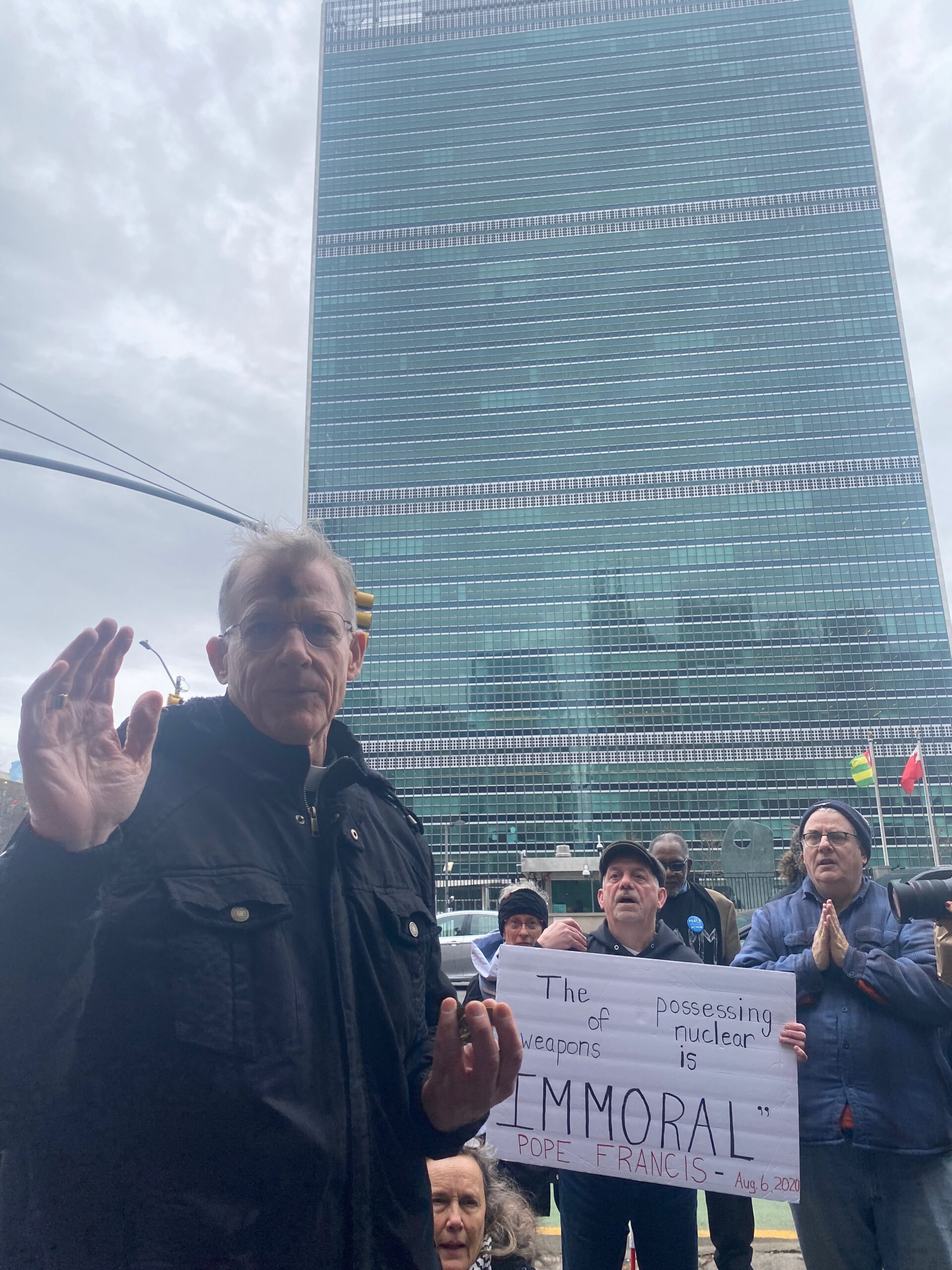
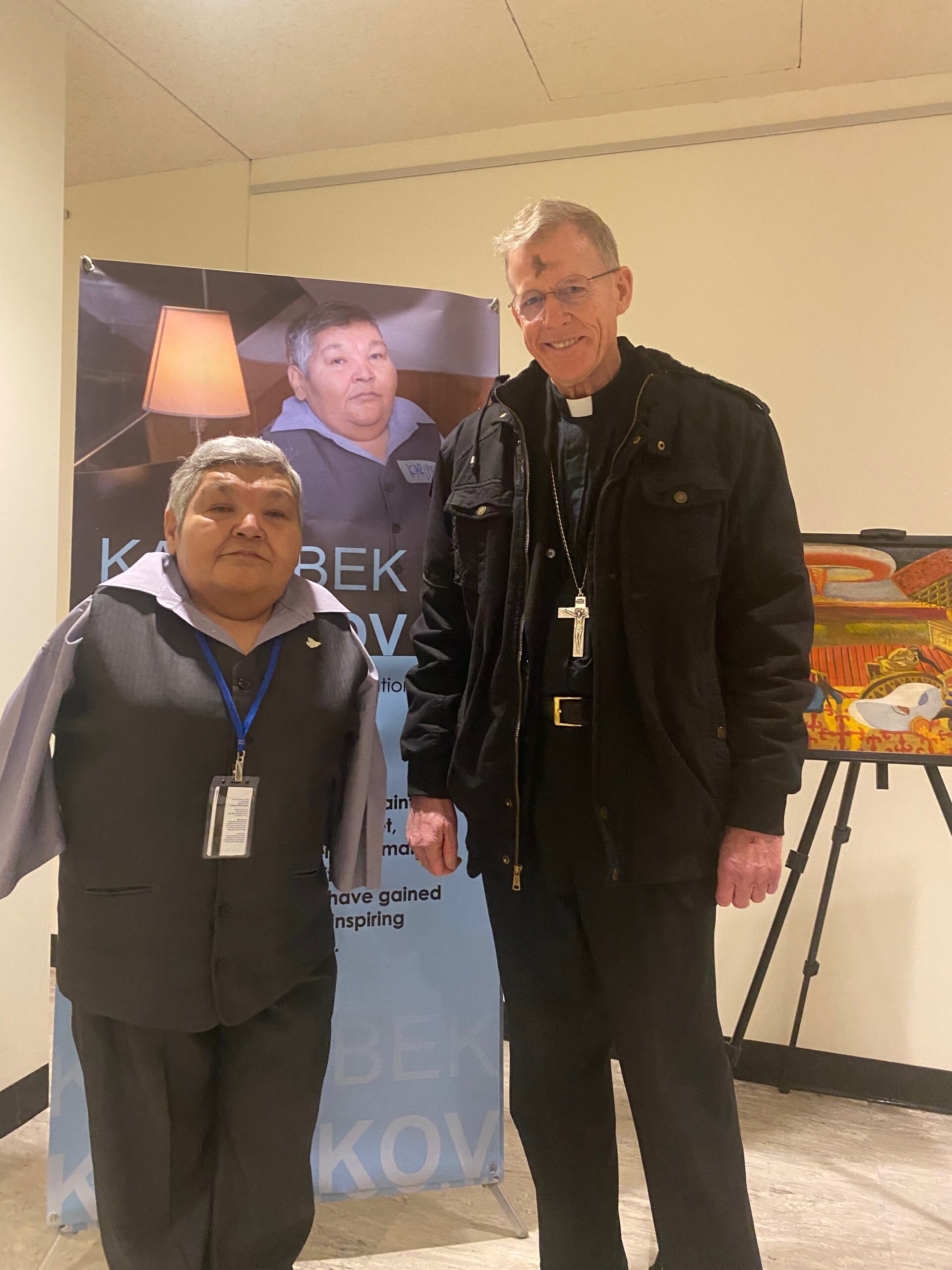
In New York City this week? Join Pax Christi members and friends at Mass with Archbishop John Wester (Santa Fe NM) on Tuesday, March 4, 6 pm, at the Church of Our Saviour, 59 Park Avenue at 38th Street. Use this link to RSVP. #TPNW #3MSP #nucleardisarmamentwww.dorothydayguild.org/WesterMass25
— Pax Christi USA (@paxchristiusa.bsky.social) 2025-03-03T16:35:50.942Z
Germany skips UN conference on banning nuclear weapons in New York
“Germany has decided not to take part in a UN conference in New York to review a landmark treaty on nuclear weapons prohibition.”
By dpa International | March 4, 2025 dpa-international.com
“The Treaty on the Prohibition of Nuclear Weapons dates back to a time before the Russian war of aggression against Ukraine,” the Foreign Office told dpa in Berlin on Tuesday. “The intention and ambition of the treaty no longer reflect the current reality in security policy.”
The treaty was signed in 2017 and came into force in 2021. There are currently 94 signatories and 73 states parties, according to the International Campaign to Abolish Nuclear Weapons (ICAN).
Germany does not possess nuclear weapons but is allied with three nuclear powers in NATO: the United States, France and the United Kingdom.
Berlin is not a signatory to the prohibition treaty, but it participated in previous conferences as observers.
Brief Analysis of Today’s U.S. Supreme Court Oral Arguments on the Illegality of Licensing Radwaste Dumps in TX and NM
Today the United States Supreme Court heard arguments in the case of the Nuclear Regulatory Commission vs. Texas. At issue is whether the NRC exceeded its authority when it approved licenses for proposed “consolidated interim storage facilities” for high-level radioactive waste, and this includes highly irradiated “spent” fuel from nuclear power plants.
Two consolidated interim storage facilities are planned for western Texas and southeastern New Mexico. The Nuclear Waste Policy Act of 1982, as Amended specifically prohibits private “interim” storage of federal spent nuclear fuel, and disallows the Department of Energy from taking title to the waste unless a permanent geologic repository is licensed, built and opened. The law intended to prevent private “interim” storage of federal radioactive waste because interim storage is much less robust than permanent storage, and would double the risk of accident or attack during transport, since consolidated “interim” storage means the waste has to be moved twice, once to the CISF and again to a permanent repository.
Broken arrows: The hidden secret behind America’s missing nuclear weapons
“Dedicated Navy divers, demolition teams, and high-powered sonar spent weeks searching the ocean floor and came up empty.”
By Kaif Shaikh, Interesting Engineering | March 3, 2025 interestingengineering.com
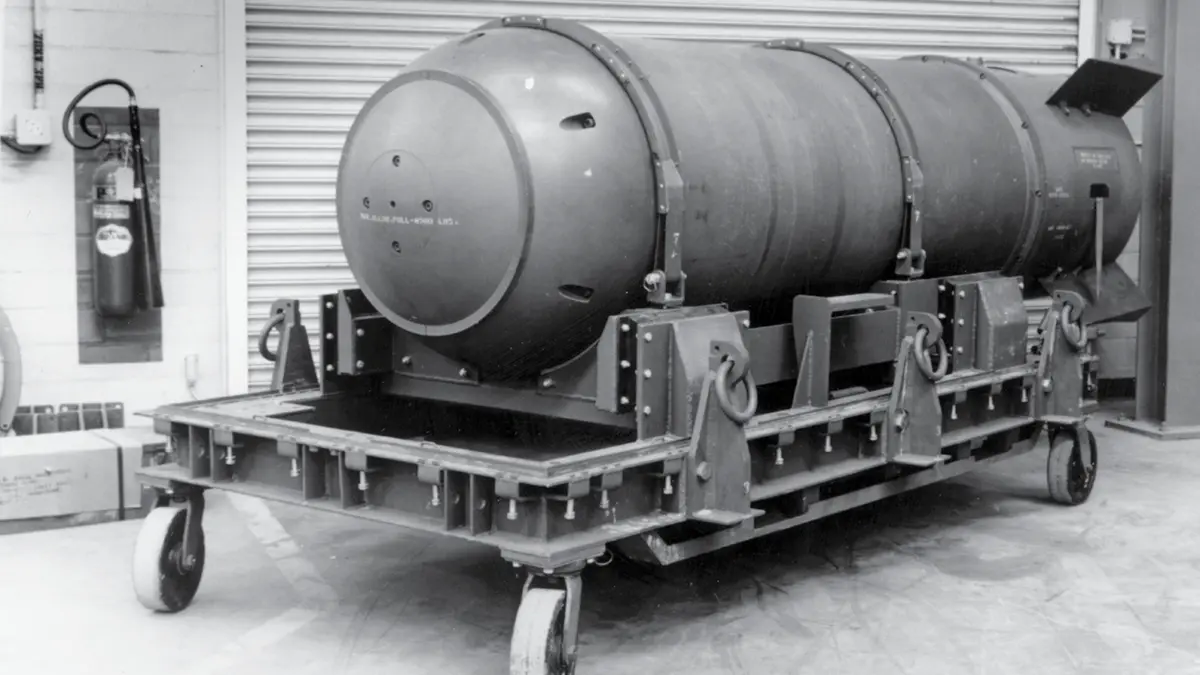
Throughout history, the idea of misplacing a nuclear weapon may sound like a plot twist in an espionage novel. The United States has experienced more than a handful of such incidents. Known as “Broken Arrows,” these events typically refer to any accidents involving nuclear weapons that do not pose an immediate risk of triggering a nuclear war.
For decades, details remained hidden behind top-secret clearances. However, unclassified records reveal that the U.S. military has had a surprising number of mishaps, with some bombs still unaccounted for to this day.
What are broken arrows?
The Department of Defense defines a “Broken Arrow” as any incident involving a U.S. nuclear weapon or warhead that results in accidental launching, firing, detonating, theft, or loss of the weapon. From 1950 to 1980, official sources cite 32 Broken Arrow incidents, but there may have been more, given the secrecy surrounding nuclear matters.
Christie Brinkley: Don’t let the US resume nuclear weapon tests that ended decades ago
“The United States and other nuclear powers are now moving closer to resuming nuclear weapons tests, decades after testing ended. This highly disturbing trend must be halted.”
By Christie Brinkley Special to The Kansas City Star Miami Herald | March 3, 2025 miamiherald.com
Since the atomic age, 2,056 nuclear weapons have been detonated, 528 of them above the ground. The United States and Soviet Union accounted for about 85% of these tests. The explosive power of atmospheric tests equaled 29,000 Hiroshima bombs. Airborne radioactive fallout circled the globe, re-entered the environment through precipitation, and entered human bodies through food and water.
Cold War bomb testing was part of a massive increase in the number of nuclear weapons, which peaked at more than 60,000. After nuclear war was barely avoided during the Cuban missile crisis, public pressure convinced leaders to ban all above-ground tests in 1963 — a treaty that has never been violated.
The test ban treaty was a huge achievement for peace, beginning eased tensions between nuclear nations. It also was a landmark for public health. A study by St. Louis residents and scientists found an enormous buildup of radioactive strontium-90 levels in baby teeth — 63 times higher in children born in 1963 compared to those born in 1950.
LISTEN LIVE TO U.S. SUPREME COURT ORAL ARGUMENTS ON THE ILLEGALITY OF LICENSING RADWASTE DUMPS IN TX AND NM
“The case pits the nuclear industry’s push for CISFs against the interests of fossil fuel companies which object to high-level radioactive waste dumped in their drilling/fracking areas, the state governments of Texas and New Mexico, which have passed laws prohibiting importation of nuclear waste to their states, and cities along the transport routes which object to it being shipped through their jurisdictions. Their amicus briefs in the case are posted here.”
For immediate release
MEDIA ALERT for Wednesday, March 5, 2025
WASHINGTON, D.C.,
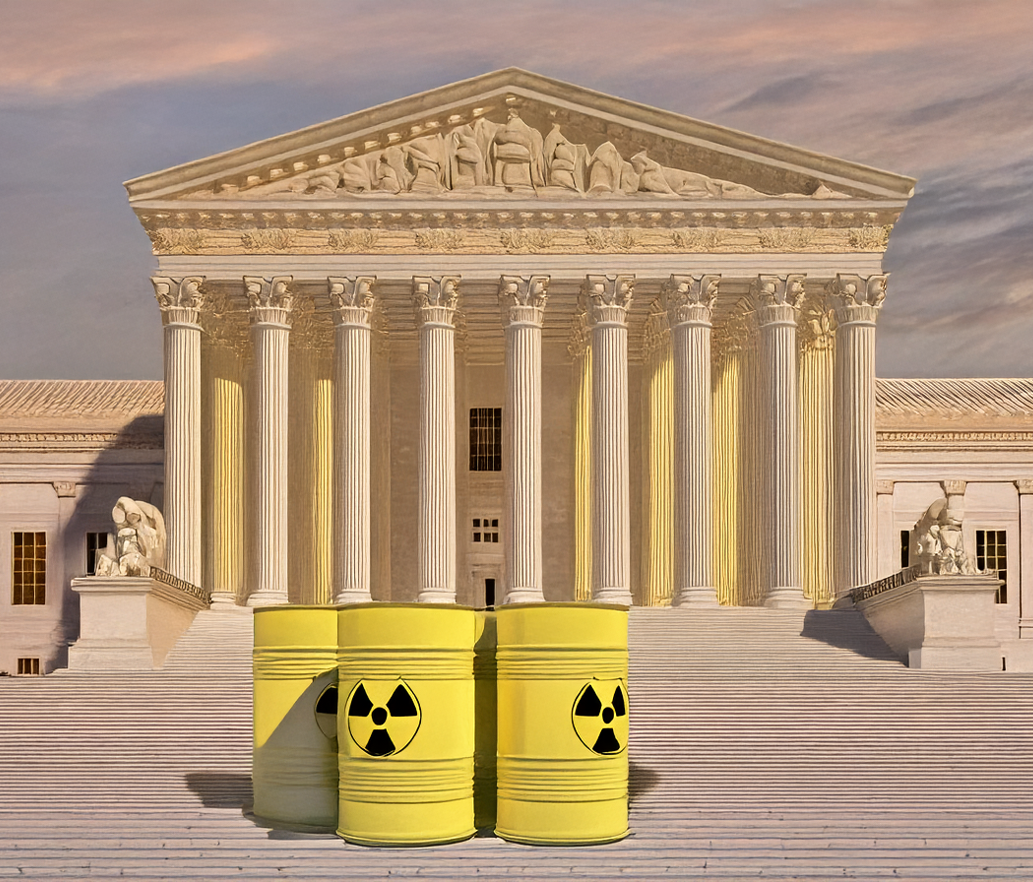 WHAT? Wednesday morning, March 5, the United States Supreme Court will hear oral arguments in Nuclear Regulatory Commission vs. Texas. At issue in the SCOTUS (Supreme Court of the U.S.) proceeding is whether the NRC exceeded its authority when it approved licenses for proposed “consolidated interim storage facilities” for high-level radioactive waste including highly irradiated “spent” fuel from nuclear power plants. Two CISFs are planned for western Texas and southeastern New Mexico. The Nuclear Waste Policy Act of 1982, as Amended specifically prohibits private “interim” storage of federal spent nuclear fuel, and disallows the Department of Energy from taking title to the waste (which would be necessary for DOE to transport it to CISFs), unless and until a permanent geologic repository is licensed, built and opened to receive the waste. The law intended to prevent private “interim” storage of federal radwaste, which is much less robust than permanent storage, and would double the risk of accident or attack during transport, since consolidated “interim” storage necessitates moving the waste twice, once to the CISF and again to a permanent repository. The NRC approved recent CISF license applications despite the law, saying it anticipated Congress would change it in the future. But the federal Fifth Circuit court ruled that the NRC didn’t have that authority. If the Supreme Court strikes that ruling down, it could open the floodgates for thousands of shipments of spent fuel from nuclear power plants across the US, through many states, to CISFs in Texas and New Mexico.
WHAT? Wednesday morning, March 5, the United States Supreme Court will hear oral arguments in Nuclear Regulatory Commission vs. Texas. At issue in the SCOTUS (Supreme Court of the U.S.) proceeding is whether the NRC exceeded its authority when it approved licenses for proposed “consolidated interim storage facilities” for high-level radioactive waste including highly irradiated “spent” fuel from nuclear power plants. Two CISFs are planned for western Texas and southeastern New Mexico. The Nuclear Waste Policy Act of 1982, as Amended specifically prohibits private “interim” storage of federal spent nuclear fuel, and disallows the Department of Energy from taking title to the waste (which would be necessary for DOE to transport it to CISFs), unless and until a permanent geologic repository is licensed, built and opened to receive the waste. The law intended to prevent private “interim” storage of federal radwaste, which is much less robust than permanent storage, and would double the risk of accident or attack during transport, since consolidated “interim” storage necessitates moving the waste twice, once to the CISF and again to a permanent repository. The NRC approved recent CISF license applications despite the law, saying it anticipated Congress would change it in the future. But the federal Fifth Circuit court ruled that the NRC didn’t have that authority. If the Supreme Court strikes that ruling down, it could open the floodgates for thousands of shipments of spent fuel from nuclear power plants across the US, through many states, to CISFs in Texas and New Mexico.
Expanded Plutonium “Pit” Bomb Production is Immoral – Spend Nuclear Weapons “Modernization” Money Ethically ELSEWHERE
Why the nation’s nuclear waste may eventually be headed to northwest Colorado
Nuclear waste is piling up at power plants around the country, and we have no idea where to put it. Many states are aggressively fighting plans for new storage facilities.
But northwest Colorado is quietly opening the door.
By In The NoCo, Scott Franz, Erin O’Toole, Brad Turner | February 22, 2025 kunc.org
KUNC’s investigative reporter Scott Franz recently traveled around rural Colorado talking with people about what nuclear waste storage could do for the local economy – and also interviewing folks who are dead set against that idea.
On this special edition of In The NoCo, we’ve combined all of Scott’s reporting from the past few months into a single episode. You can also see photos and check out more on this investigation.

Arms Control Association – Trump Regains Control Over Nuclear Policy: What’s Next?
It has been barely a month since Inauguration day, but it is apparent that Donald Trump is determined to reshape U.S. foreign policy, radically alter alliance relationships, and upend Washington’s approach toward key adversaries, like Russia, in ways that are not yet clear.
Arms Control Association | February 21, 2025 armscontrol.org
And here at home, Trump’s brash assertion of executive power is putting our nation’s democratic institutions and the rule of domestic law at risk, in part by altering or dismantling key government departments,agencies and functions, all without congressional approval.
All of this makes our mission to provide reliable information and sound policy solutions even more important and difficult.
The Arms Control Association has a clear and focused strategy to reduce the dangers posed by nuclear weapons and other WMD. Many of these priorities are outlined in this ACA-organized January 28 communication to all members of Congress that was endorsed by 16 of our partner organizations and leaders.
Like many others, however, we are still sorting out how to adjust to and contend with the post-Inauguration political dynamics.
But we must and we will, because critical, weapons-related security decisions lie ahead:
- So long as Russia’s assault on Ukraine continues, there is still a heightened risk of nuclear weapons use, and there are narrowing prospects for a deal to maintain limits on the U.S. and Russian nuclear arsenals after New START expires in one year.
- Although Trump has decried exorbitant military expenditures, the authors of Project 2025, the 920-page manifesto crafted by the Heritage Foundation and others, want the United States to spend even more than the current $756 billion ten-year price tag for nuclear modernization in order to increase the size and diversity of the U.S. arsenal. China and Russia are watching and will surely respond to any U.S. nuclear buildup.
- Project 2025 also calls for preparing to resume U.S. nuclear explosive testing for the first time since 1992. Should the United States do so, it would open the door to nuclear testing by other states, unravel the CTBT, and blow apart the global nonproliferation system at a time of increasing nuclear danger.
- Since Trump withdrew from the 2015 Iran nuclear deal, Tehran has expanded its capacity to produce weapons-grade nuclear material and reduced international inspectors’ access. Trump says he wants a nuclear deal; Iran’s president says he wants a nuclear deal. But time is short. Without a deal to scale back tensions and Iran’s nuclear capacity, we could see renewed international sanctions by October, Iranian withdrawal from the NPT, and/or an attempt by Israel to bomb Iran’s nuclear sites.
How exactly the second Trump administration and the new Congress will try to navigate all these nuclear-related challenges ahead is not yet clear — but if Project 2025 becomes the blueprint for U.S. nuclear weapons policy, we are in big trouble.
But, it may also be possible to steer us toward a safer course.
Trump wants to initiate denuclearization talks with Russia and China
On Thursday, President Donald Trump signaled that he wants to engage with Russia and China on denuclearization efforts.
By Erik English, BULLETIN OF ATOMIC SCIENTISTS | February 14, 2025 thebulletin.org
“There’s no reason for us to be building brand new nuclear weapons. We already have so many,” Trump said from the White House.
“You could destroy the world 50 times over, 100 times over. And here we are building new nuclear weapons, and they’re building nuclear weapons, and China’s building nuclear weapons.” The number of nuclear weapons the United States and Russia can have is established by New START, which expires in 2026. Without a new agreement, nuclear states could begin to build up their arsenals for the first time since the Cold War. “Hopefully, there’ll never be a time when we need those weapons,” Trump said. “That’s going to be a very sad day, that’s going to be probably oblivion.”
Share Your Experiences at Los Alamos National Laboratory
The New York Times would like to hear from you about workplace protocols and safety measures at LANL.
By Alicia Inez Guzmán | Alicia Inez Guzmán is reporting on the nuclear industry in New Mexico as part of The Times’s Local Investigations Fellowship – THE NEW YORK TIMES February 11, 2025 nytimes.com
More voices, better journalism. The questionnaire you are reading is just one tool we use to help ensure our work reflects the world we cover. By inviting readers to share their experiences, we get a wide range of views that often lead to a more deeply reported article. We make every effort to contact you before publishing any part of your submission, and your information is secure. Here’s more on how it works and why it’s good for us and you.
The Los Alamos National Laboratory (LANL) has recently embarked on the “new Manhattan Project” — a hiring spree and multibillion dollar expansion to build plutonium bomb cores for nuclear weapons.
The Times is writing about this new mission and how the lab is keeping workers safe, reporting accidents and environmental contamination and making needed upgrades to key facilities, including in Technical Area 55, the heart of bomb core production.
Have you or someone you know worked at TA-55 or another “hot site” and experienced a workplace accident or been exposed to plutonium, beryllium or another radioactive or toxic substance on the job? What safety measures were in place? Were there follow-up health assessments?
Please answer the questions using the form:
LANL Site-Wide EIS Hearings in Santa Fe and Los Alamos Filled with Loud Protest and Vehement Dissent: Nuclear Weapons are IMMORAL
In this Site-Wide EIS we’re given three options: Expanded nuclear weapons programs (hypocritically called the no action alternative), then we’re presented with yet more expanded nuclear weapons programs, and the third alternative is even more expanded nuclear weapons programs. What we really need is a genuine alternative in this Site-Wide, and I hope that citizens will repeatedly bring this up. We need a TRUE ALTERNATIVE in which the US begins to show global leadership towards nuclear disarmament that it promised to in the Non-Proliferation Treaty, and that should be reflected in the sitewide which shows just passive maintenance of the stockpile. We don’t need Pit Production because it’s for NEW designs – NOT to ensure the safety and reliability of the existing stockpile. The US, for our own national security and global security, we need to lead the world towards global nuclear disarmament – and this Site-Wide EIS does the opposite.
The hearings in Santa Fe and Los Alamos on February 11 and February 13, 2025, respectively, both had virtual participation options. The attendees online and in person were equally vehement in protesting the “rigged game” we’re given with this SWEIS and decrying the fact that there is no alternative besides increased nuclear weapons production.
And read an exceprt from the Archbishop of Santa Fe, John Wester’s comments:
“As we all know, we’re in an accelerating new nuclear arms race that’s made even more dangerous because of artificial intelligence, multiple nuclear actors and hypersonic delivery systems. It’s an already scary situation that has become even scarier, and what concerns me is that Los Alamos and Santa Fe play a key role in naturally fostering and promoting this new nuclear arms race – a race which I believe is an affront to all that is good and holy, all from our perspective that God has placed in us to live in harmony with one another. Nuclear weapons pose one of the greatest threats to that harmony. I think it’s important to know what I’m learning more and more about is that expanded plutonium pit production is not simply to maintain the safety and reliability of our existing so-called deterrence. I think it’s important that people are aware that it’s really for new design nuclear weapons for this new particular armed race. I think it’s important that that people recognize that deterrence is not the way to go. In that light, I would say obviously for me is a Catholic Bishop, Pope Francis I think has really changed the whole moral landscape of looking at nuclear weapons. On the 70th anniversary of the Hiroshima atomic bombing, Pope Francis declared that the very possession of nuclear weapons is immoral. As Catholics this was an extremely important shift there. The 1983 United states conference of Catholic Bishops did allow for deterrence – it was promoting disarmament but made caveats for deterrence. But Pope Francis has taken that off the table in saying that even possessing nuclear weapons is immoral, it’s unethical. One of the main reasons for this church’s shift on this was that the nuclear weapons powers really have failed in their pledge in 1970 when they joined the Non-Proliferation Treaty. The TPNW came about because of that failure, and so it seems to me then based on what Pope Francis said, that if possessing nuclear weapons is immoral, then expanding plutonium pit cores and modernizing our weapons systems in order to be more involved in the new nuclear arms race is also immoral. This policy is unethical. Now I want to be careful here, I am not saying that anyone working at Los Alamos or Sandia or Lawrence Livermore in California, I’m not judging them or saying there are immoral – that’s a different matter in one’s conscience. I’m saying that the policy is involved and the Pope said that nuclear weapons themselves are intrinsically immoral. I think that’s an important thing to keep in mind, that that we need to be moving toward disarmament and that if we’re not, if that’s not our trajectory, rather if it’s just to build up our defenses, then that’s an immoral buildup.”
Gearing Up for the Public Hearings on the LANL Draft Sitewide Environmental Impact Statement: Pit Production at LANL
“Nuclear Watch New Mexico hosted a workshop on February 6 on the newly released Draft Sitewide Environmental Impact Statement (SWEIS) for Los Alamos National Laboratory (LANL) to present information and elicit discussion on this NEPA process that Jay Coghlan, executive director of Nuke Watch, referred to as a “rigged game” at the beginning of the workshop. What that means will become evident as I review the part of the workshop I attended.”
By Kay Matthews, La Jicarita | February 7, 2025 lajicarita.wordpress.com
Archbishop John Wester, an outspoken critic of nuclear weapons proliferation under the guise of nuclear deterrence instead of disarmament spoke briefly to open the discussion. Quoting Pope Francis, he said, “possessing nuclear weapons is immoral.” He then said, “Pit production is immoral.” His only qualification is that it’s the policy that’s immoral, not the people who promote it. We’ve failed to uphold already existing treaties and failed to implement new ones. He’ll be going to the United Nations in March for a meeting, Treaty on the Non-Proliferation of Nuclear Weapons, and to Japan in August to meet with his partners in the World Without Nuclear Weapons.
Coghlan explained that next week the Department of Energy (DOE) and the semi-autonomous National Nuclear Security Administration (NNSA) will hold public hearings, as required by NEPA, on the LANL SWEIS, in Santa Fe, Española, and Los Alamos. He cautioned that while we should all be “cynical” about the process, we need to go ahead and protest the fact that all three alternatives provided in the SWEIS expand pit production, just at different amounts. The process is rigged because the DOE and NNSA failed to update a 2008 Environmental Impact Statement before pit production began at LANL (the other nuclear facility, the Savannah River Site in South Carolina, is slated to produce 50 pits a year but is completely unprepared for pit production).
The guest speaker was Dylan Spaulding, Senior Scientist for the Union of Concerned Scientists…
NukeWatch Los Alamos Lab Site-Wide EIS Workshop – February 6, 2025
Full Video Recording: NukeWatch Los Alamos Lab Site-Wide EIS Workshop |
NukeWatch Presentation: Los Alamos Lab Site-Wide EIS Workshop |
|---|---|
|
NukeWatch Los Alamos Lab Site-Wide EIS Workshop |
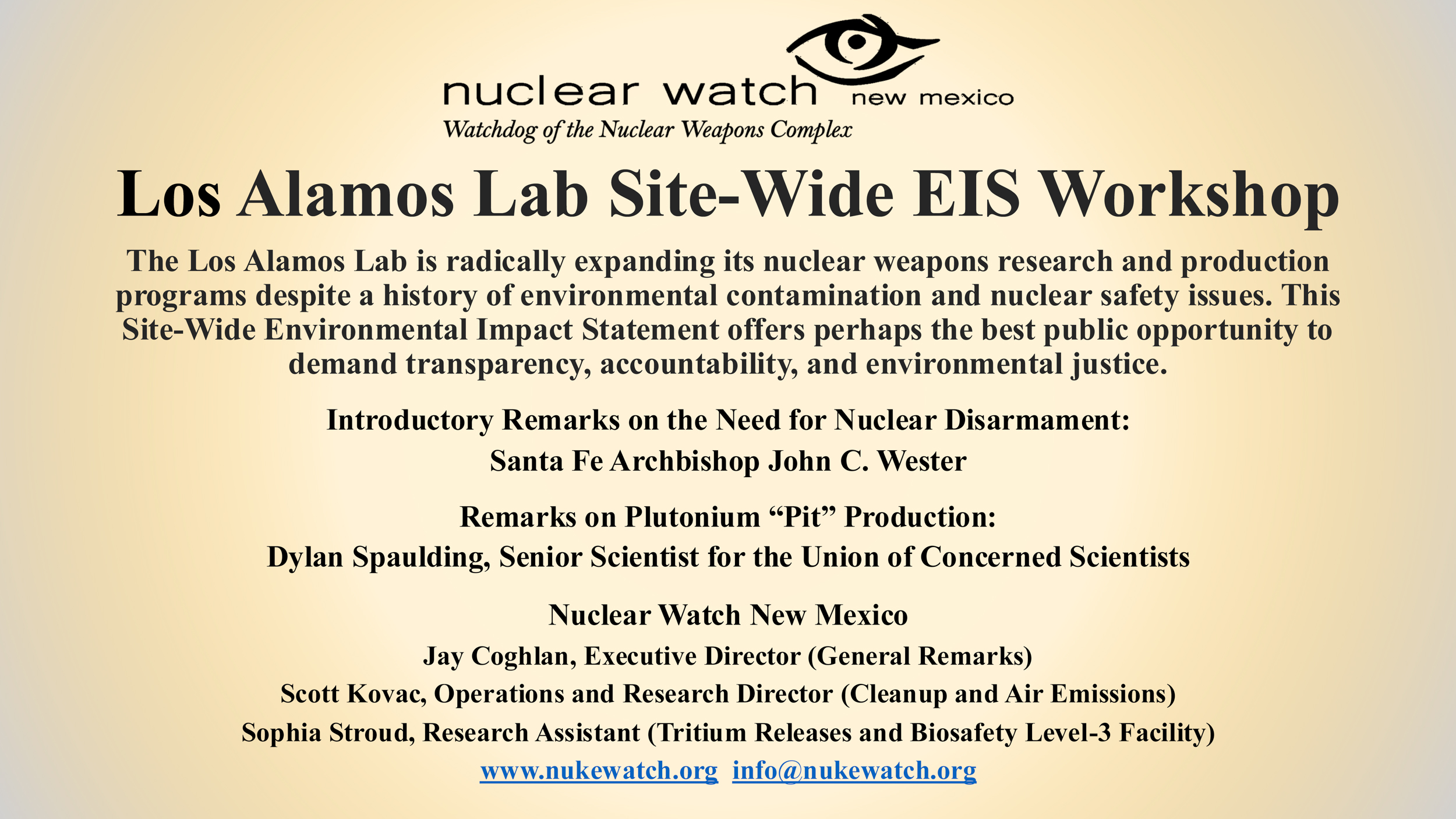 |
In Memoriam: Ken Mayers
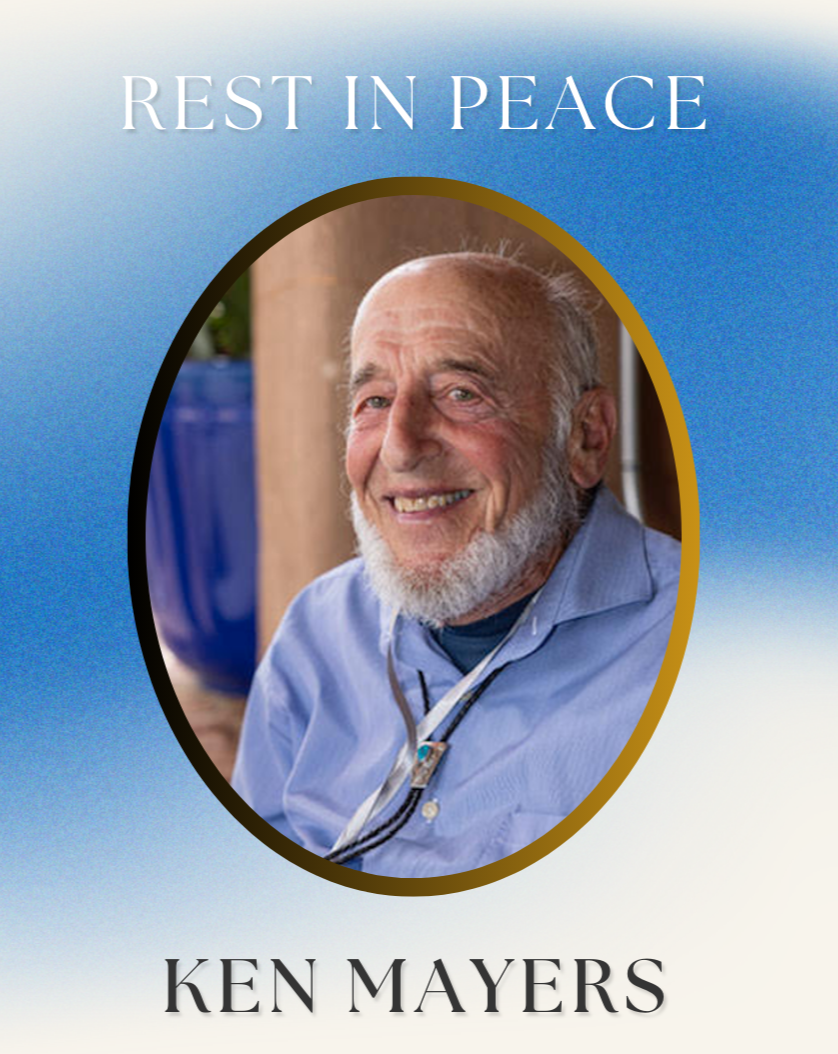 We here at NukeWatch will dearly miss Ken’s weekly presence at the corner vigil to protest Nuclear Weapons in Santa Fe.
We here at NukeWatch will dearly miss Ken’s weekly presence at the corner vigil to protest Nuclear Weapons in Santa Fe.
Locally, Ken was co-founder of the Santa Fe Chapter of Veterans for Peace and an active member of Santa Feans for Justice in Palestine. Ken worked with the local chapter of US Combatants for Peace and the Justice Council of the Unitarian Universalist Congregation in Santa Fe where he was also an enthusiastic baritone and co-founder of the NM Peace Choir.
A Celebration of Ken’s life will be held Friday, April 4 beginning at 12 noon at the corner of Sandoval and West Alameda, (Santa Fe’s weekly vigil to protest Nuclear Weapons), followed by lunch and a hybrid service at the UU Congregation, 107 West Barcelona Street, Santa Fe, NM.
For those wanting to pay tribute to Ken, please consider planting a tree through A Living Tribute (https://shop.alivingtribute.org/) or make a donation in his memory to the Santa Fe Joan Duffy Chapter of Veterans for Peace https://www.vfp-santafe.org/
Ken was a lifelong, passionate defender of peace. Read more:
Los Alamos’ plutonium pit production of 30 annually for Sentinel may have to wait beyond 2026
As the Department of Energy’s National Nuclear Security Administration awaits its marching orders from the President Donald Trump (R) administration, the Los Alamos National Laboratory is now saying it will get to an annual plutonium pit production goal of 30 “ASAP.”
Exchange Monitor | January 31, 2025 counterpunch.com
Such pits are the triggers for thermonuclear weapons…
Nuclear News Archive – 2022
Trump team’s case for new nuke cites risks in current arsenal
The administration justified new atomic weapons by citing rarely acknowledged vulnerabilities in U.S. nuclear arsenal
BY: JOHN M. DONNELLY | rollcall.com
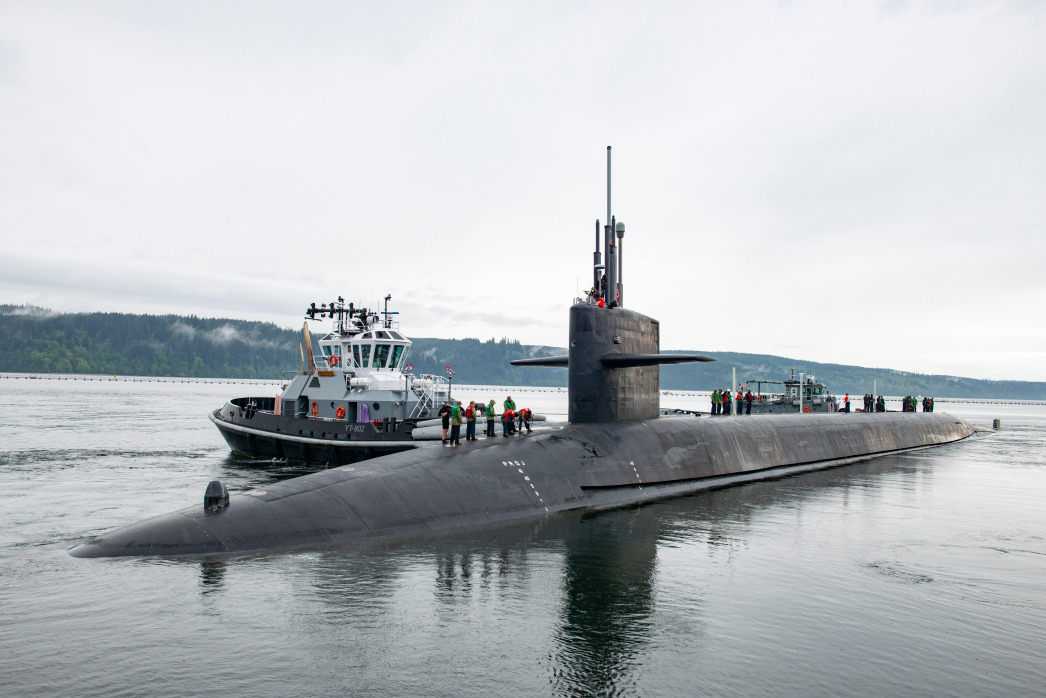
The Trump administration, in a closely held memo to lawmakers this spring, justified developing the first new U.S. atomic weapon since the Cold War by citing vulnerabilities and risks in the current nuclear arsenal that are rarely or never acknowledged in public.
In an unclassified five-page white paper sent to Congress in May, the Pentagon and the Energy Department’s National Nuclear Security Administration, or NNSA, affirm a point they have long minimized: the dangers of land-based missiles ready to launch minutes after a warning of enemy attack.
They also discuss threats to U.S. nuclear missile submarines that have previously been depicted as all but undetectable. They say, too, that a new class of ballistic missile submarines lacks the firepower of its predecessors, creating a need for a lighter and more powerful type of warhead — in addition to the two existing types. As for the current two sets of warheads, they say they have too few of the most destructive kind and too many of the less forceful variety — and excessively rely on the latter.
Gov. argues against Holtec nuclear storage site
Gov. Michelle Lujan Grisham sent a letter to President Donald Trump on Tuesday, arguing against a proposed nuclear waste interim storage facility in southeast New Mexico.
“The proposed (facility) would join the ranks of uranium mining, nuclear energy and defense-related programs that have long created risks to public health and the environment in the state of New Mexico that are disproportionately greater than such risks to the general population of the United States,” she wrote.
BY: THERESA DAVIS, JOURNAL STAFF WRITER | Copyright © 2020 Albuquerque Journal
The proposed Holtec International site would store 500 stainless steel canisters of the nation’s spent nuclear fuel on 1,000 acres between Carlsbad and Hobbs, with a full storage capacity of 10,000 canisters.
“New Mexico has grave concerns for the unnecessary risk to our citizens and our communities, our first responders, our environment, and to New Mexico’s agriculture and natural resource industries,” Lujan Grisham wrote in the letter.
LANL trolley that carries radioactive material broken down
“If LANL can’t drive a trolley or clean up old stuff without exposing people, how can they safely expand plutonium pit production?” asked Scott Kovac, research and operations director for nonprofit Nuclear Watch New Mexico.
BY: SCOTT WYLAND | santafenewmexican.com
An internal trolley that carries radioactive material to several glove-box areas at Los Alamos National Laboratory’s plutonium facility has been broken for almost two months, hindering operations at the site, a federal watchdog report said.
The trolley became disabled in early June, and its bucket is stuck with a container of nuclear material inside, according to a report issued by the Defense Nuclear Facilities Safety Board.
“However, the location is not creating any radiological exposure concerns,” the report said.
The report noted the idled trolley has hampered the internal transfer of radioactive material to the sealed containers with protective gloves attached, but it didn’t say to what extent.
“F-35s Don’t Help Families Pay Their Bills”: GOP Slips Pentagon Into COVID Bill
“People are dying, or worried about keeping a roof over their families’ heads, or cutting hours because their kids’ schools are closed,” said Anthony Weir, a lobbyist on nuclear disarmament and Pentagon spending at the Friends Committee on National Legislation. “And this is the time to jam some military procurement into this year that you didn’t get last year?”
BY: JAKE JOHNSON | truthout.org

SAMUEL KING JR. / U.S. AIR FORCE
In a floor speech late Monday, Senate Majority Leader Mitch McConnell described the GOP’s newly released coronavirus stimulus package as a “carefully tailored” plan to provide financial relief to desperate Americans.
But a look at the legislative text (pdf) released by Senate Republicans shows the HEALS Act is replete with massive gifts to the Pentagon and defense contractors that would do nothing to aid the unemployed, provide nutrition assistance to hungry children, prevent an avalanche of evictions, or stop the spread of coronavirus.
“Last time I checked F-35s don’t help families pay their bills,” Rep. Chuy García (D-Ill.) tweeted in response to the GOP’s proposal of $686 million in spending on new fighter jets.
Pending Energy Spending Bill Mixed Bag for INL
“We all know major change takes time, and we know that it is difficult to turn this ship, but we are doing it in our time…We can and must do better than refight a tired old battle on Yucca Mountain.” – Rep. Marcy Kaptur, D-Ohio
By: NATHAN BROWN | postregister.com
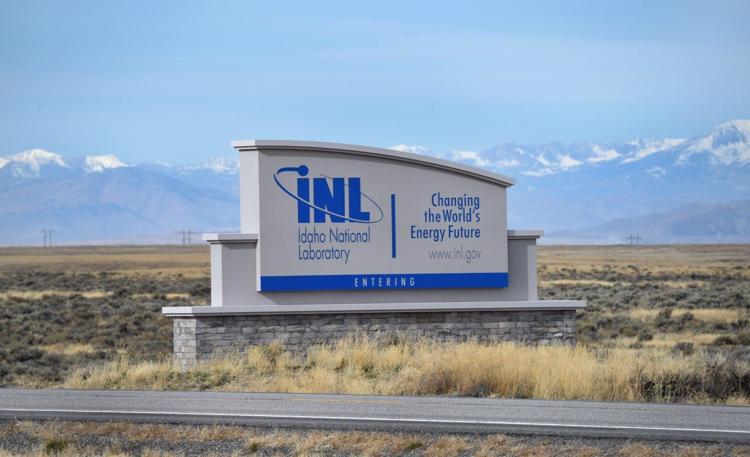
The Energy and Water appropriations bill Congress is expected to take up next week represents a mixed bag for Idaho National Laboratory, with spending on some priorities kept flat and slight increases for others.
The U.S. House Appropriations Committee voted along party lines earlier this month, with the Democrats in favor and the Republicans opposed, to advance the bill. At $49.6 billion in the regular budget, it represents a $1.26 billion increase over this year’s spending, according to a committee reporting summarizing the bill. However, on top of this it also includes an additional $23.5 billion in emergency one-time funding meant to bolster various clean energy projects and aid in recovery from the coronavirus pandemic that has led to pushback from Republicans. It and six other spending bills are expected to be considered by the full House this week, according to a news release from the committee.
Rep. Tulsi Gabbard Rebuts U.S. Claim that Marshall Islands Nuclear Waste Site is Safe
“The U.S. government is responsible for this storage site and must ensure the protection of the people and our environment from the toxic waste stored there,” Gabbard said in a news release announcing her amendment to the defense bill.
BY: SUSANNE RUST | latimes.com

One of Hawaii’s high-profile politicians has dismissed a recent Department of Energy report concluding that a leaking U.S. nuclear waste repository in the Marshall Islands is safe for people there.
She called for the department to convene a more independent assessment of the waste site.
“I think it’s time the Department of Energy relied on someone with fresh eyes to examine the situation,” said U.S. Rep. Tulsi Gabbard, one of Hawaii’s two Democratic House members, in a recent interview with The Times.
Gabbard, who gained national attention by launching what some called a quixotic campaign for the Democratic presidential nomination, has been outspoken in Congress on behalf of the Marshall Islands, which the United States used as a testing site for scores of nuclear weapons during the Cold War.
She’s pushed to reinstate Medicaid eligibility to people from the Marshall Islands, Micronesia and Palau who are working and living in the United States but lack access to healthcare. She also was instrumental in requiring the Department of Energy to reexamine the safety of Runit Dome, a leaking nuclear waste repository in the Marshall Islands, as part of the 2019 National Defense Authorization Act.
Novel gas-capture approach advances nuclear fuel management
“If one day we want to treat the spent fuels, which in the U.S. are currently stored in pools and dry casks at the nuclear power plant sites, we need to handle the volatile radionuclides.” explains Ju Li, MIT’s Battelle Energy Alliance Professor of Nuclear Science and Engineering and professor of materials science and engineering. “Physisorption of krypton and xenon is a good approach, and we were very happy to collaborate with this large team on the MOF approach.”
By: PETER DUNN, MIT | phys.org

Nuclear energy provides about 20 percent of the U.S. electricity supply, and over half of its carbon-free generating capacity.
Operations of commercial nuclear reactors produce small quantities of spent fuel, which in some countries is reprocessed to extract materials that can be recycled as fuel in other reactors. Key to the improvement of the economics of this fuel cycle is the capture of gaseous radioactive products of fission such as 85krypton.
Therefore, developing efficient technology to capture and secure 85krypton from the mix of effluent gasses would represent a significant improvement in the management of used nuclear fuels. One promising avenue is the adsorption of gasses into an advanced type of soft crystalline material, metal organic frameworks (MOFs), which have extremely high porosity and enormous internal surface area and can incorporate a vast array of organic and inorganic components.
Top Ex-SCANA Official Stephen Byrne Pleads Guilty in SC Nuclear Fiasco Fraud Case
Stephen Byrne, a top executive of the now-defunct SCANA electric utility, pleaded guilty Thursday to criminal conspiracy fraud charges in federal court in Columbia.
BY: John Monk & Joseph Bustos | thestate.com
Byrne was part of a conspiracy that engineered a “cover-up” to hide the extent of the publicly traded company’s financial problems caused by the nuclear project’s difficulties, according to charging documents in his case. “Through intentional misrepresentations,” Byrne and others deceived regulators and customers, documents said.
White House held talks over resuming US nuclear tests, John Bolton says
Ex-Trump adviser and testing advocate tells Guardian ‘certainly it was discussed’ but no decision was made by the time he left
BY: JULIAN BORGER | theguardian.com

White House officials held a series of discussions over the past two years on the possibility of resuming US nuclear testing, according to the former national security adviser John Bolton.
“Certainly the subject was discussed,” Bolton, a fierce advocate of testing, told the Guardian. However, there was opposition from some in the administration who felt current computer-based testing of US warheads was sufficient, and no decision was made by the time Bolton left the White House last September.
When the prospect of the first US underground nuclear test in nearly three decades came up at a White House meeting in May, it triggered an outcry from arms control advocates and a Democratic amendment to the 2021 National Defense Authorization Act, blocking funding for preparations for a test.
Bolton, who has published a memoir on his time in the Trump White House titled The Room Where It Happened, said the issue was discussed in general terms on a number of occasions while he was national security adviser from April 2018 to September 2019. However, the discussions did not become “operational” as his priority had been to take the US out of the Intermediate-range Nuclear Forces (INF) treaty.
Ohio Nuclear Power Scandal
As [David] DeVillers described it at a press conference: it was the “largest bribery, money laundering scheme ever perpetrated against the people of Ohio.”
BY: KARL GROSSMAN | counterpunch.org
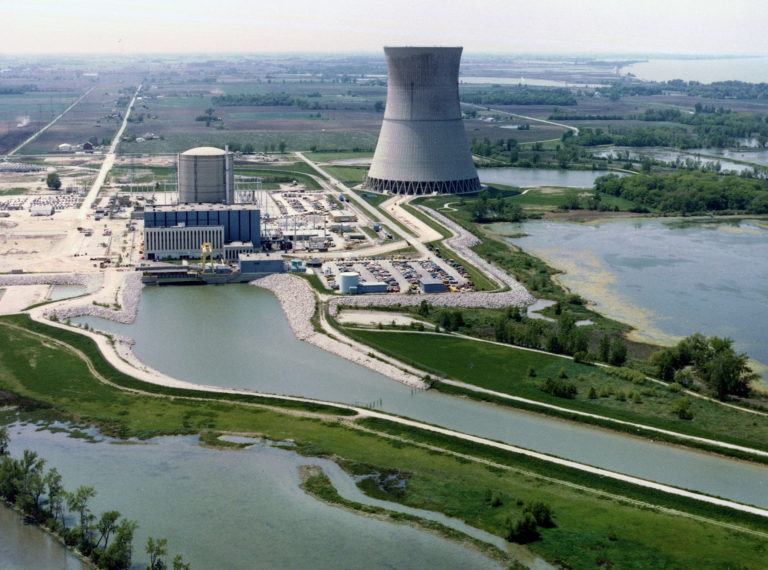
The U.S. Attorney’s Office and FBI this week charged the speaker of the Ohio House of Representative and four others in a $61 million scheme to use $1 billion in ratepayers money to keep two decrepit nuclear power plants operating.
And, said the U.S. Attorney for the Southern District of Ohio, David DeVillers, at a press conference after the arrests Tuesday: “This is by no means over. We are going to continue with this investigation.”
Those charged were involved in a “Conspiracy to Participate, Directly or Indirectly” in the scheme “through a Pattern of Racketeering Activity,” declared the “Offense Description” that headed an 81-page federal “Criminal Complaint.”
A Dirty Battle for a Nuclear Bailout in Ohio
“It has been known since the late 1970s that the cost of constructing nuclear plants in the United States is very high, but the cost gap between nuclear electricity and other alternatives has increased dramatically in the last decade. In its most recent estimate, the Wall Street firm Lazard estimated that a new nuclear plant will generate electricity at an average cost of $155 per megawatt hour, nearly four times the corresponding estimates of around $40 per megawatt hour each for new wind and solar energy plants. The average cost for natural gas plants is $56 per megawatt hour.
The gap will only grow larger. While the costs of nuclear power have been increasing, the costs of wind and solar power have declined by around 70 to 90 percent in the last decade.”
BY: Shakiba Fadaie & M. V. Ramana | thebulletin.org

Last July, Ohio’s governor signed House Bill 6 (HB6) to provide FirstEnergy (now Energy Harbor), a large electric utility, with subsidies of nearly $150 million per year to keep its Perry and Davis-Besse nuclear power plants operating. Ohio is only the fifth US state to offer such subsidies; other states include New York, Illinois, New Jersey, and Connecticut. Although the subsidies are justified by some as necessary for climate mitigation, in the latter four states, electricity generation from natural gas, which results in greenhouse gas emissions, has increased since 2017, when these subsidy programs started kicking in. Moreover, in Ohio, subsidies are also being extended to coal power plants, providing the clearest illustration that what underlies the push for subsidies to nuclear plants is not a result of a real commitment to climate mitigation but a way to use climate concerns to bolster the profits of some energy corporations.
Video: Obstacles to Nuclear Abolition — a discussion with David Swanson, Alice Slater, and Bruce Gagnon
David Swanson, Alice Slater, and Bruce Gagnon discuss obstacles to nuclear abolition and the U.S.-Russia relationship.
Inhofe, Reed Praise Senate Passage of National Defense Authorization Act for Fiscal Year 2021
The United States Senate today passed the National Defense Authorization Act for Fiscal Year 2021, 86-14.
Thursday, July 23, 2020 PRESS RELEASE: https://www.armed-services.senate.gov/press-releases/inhofe-reed-praise-senate-passage-of-national-defense-authorization-act-of-fiscal-year-2021
- Full text of Bill: https://www.congress.gov/116/bills/s4049/BILLS-116s4049rs.pdf
- Report to go with Senate NDAA, which passed the full Senate on July 23: https://www.congress.gov/116/crpt/srpt236/CRPT-116srpt236.pdf
Responsibility for Los Alamos Plutonium Facility 4 and Technical Area 55
Plutonium Facility 4 (PF–4) at Los Alamos National Laboratory’s Technical Area 55 is the primary plutonium handling facility within the National Nuclear Security Administration (NNSA). PF–4 is currently undergoing major modifications to produce war reserve plutonium pits, with a production goal of 30 pits per year by 2026.Continue reading
Bribed Ohio’s $60 Million Radioactive Uproar Rocks the 2020 Vote
“Ohio is in election-year turmoil over a Trump-supported nuke bailout bought with bribery. Whether public fury will kill the handout and affect the fall presidential election remains to be seen…But Bribed Ohio 2020 has clearly gone radioactive.”
BY: Bob Fitrakis & Harvey Wasserman | readersupportednews.com
Ohio’s biggest-ever bribery case is rocking America’s reactor industry … and the fall election.
Full details of the shocking arrest of Ohio’s powerful Speaker of the House are still unfolding.
But on Monday, the FBI charged Larry Householder and four associates with taking $60 million (that’s NOT a typo) in bribes from “Company A,” suspected to be the Akron-based nuke utility FirstEnergy. The company has not been formally named as the source of the bribe, but FE’s stock has since plummetted.
Trinity: 75 Years Later
On the 75th anniversary of the world’s first nuclear weapons explosion: The Trinity test near Alamogordo in 1945, KSFR News Director Tom Trowbridge spoke with a longtime New Mexico journalist about the anniversary.
Former SCANA Executive Pleads Guilty to Fraud Charges Tied to Failed SC Nuclear Project
“I’m glad there is going to be a little bit of justice and that Mr. Byrne is now pleading guilty to his crime, so it’s a matter of holding others accountable who were former executives of SCANA,” Tom Clements said. “I would anticipate that Kevin Marsh and Jimmy Addison are probably next in the queue to be charged, and hopefully others.”
BY: Andrew Brown & Avery G. Wilks | postandcourier.com
Covid-19 Stopped Water Pollution Monitoring At A Major Radioactive Site For Months
“Given LANL’s history it’s imperative that monitoring be robustly resumed,” Jay Coghlan, Executive Director of Nuclear Watch New Mexico, said in an email. “This is after all the Lab that use to claim that groundwater contamination was impossible… Now we know of heavy chromium and high explosives groundwater contamination which are a harbinger for more contaminants to come.”
BY: ERIC MACK | forbes.com

When the coronavirus and resulting Covid-19 pandemic closed everything in mid-March, TA-54 was one of the many places where all activity came to a virtual standstill.
Technical Area 54 is a part of Los Alamos National Labs (LANL) in New Mexico – the same Los Alamos that was home to the Manhattan Project, which ushered in the atomic era and today continues to produce radioactive triggers for nuclear weapons.
Within TA-54 is what’s called Area G. The federal government refers to as LANL’s “legacy waste management area.” For over 60 years, it has been a storage, processing and disposal area for different kinds of radioactive and otherwise toxic waste from LANL.
Nuclear Tests Have Changed, but They Never Really Stopped
75 years after the first explosive nuclear tests, now outlawed, sophisticated virtual testing allows American physicists to understand these weapons better than ever.
BY: DANIEL OBERHAUS | wired.com
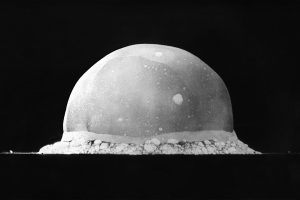
JUST BEFORE SUNRISE on July 16, 1945—75 years ago today—a patch of New Mexican desert was incinerated during the first trial of the most destructive weapon ever created. The plutonium bomb used for the Trinity test left a 5-foot crater in the ground and turned the surrounding desert floor into a radioactive green glass. The blast bathed the peaks of the nearby Oscura Mountains in a blinding white light, and dozens of scientific observers watching from 20 miles away reported feeling an immense heat wash over them. As the light from the explosion faded, one of the architects of the bomb, Kenneth Bainbridge, gave a pithy appraisal of the event to J. Robert Oppenheimer, the project’s lead scientist: “Now we are all sons of bitches.”
And he was right. Less than a month later, the United States dropped the same type of bomb on Nagasaki, Japan, just three days after detonating a smaller nuclear warhead over Hiroshima. It effectively ended World War II, but it came at the price of well over 100,000 civilian lives and the enduring suffering of those who survived.
DOE Targets End to US Reliance on Russian Nuclear Fuel, Revived Domestic Capability
“Industry and NGO representatives did not agree with Brouillette’s assertions regarding U.S. reliance on Russian nuclear fuel.
“Brouillette overstated the U.S. commercial nuclear industry’s dependence of Russian uranium ore, Edwin Lyman, director of nuclear power safety at the Union of Concerned Scientists, told Utility Dive. “Most of it comes from Australia and Canada,” he said. Industry sources put the amount coming from Russia at 20%.”
By: JOHN FUNK | utilitydive.com
Dive Brief:
- The Department of Energy is working to end U.S. reliance on Russia for nuclear fuel, Secretary Dan Brouillette told members of the House Energy and Commerce Subcommittee on Energy last week.
- The department’s Nuclear Fuel Working Group wants American-sourced uranium and plans to begin processing U.S. uranium into high-grade fuel at a DOE facility in Portsmouth, Ohio, as early as next year, Brouillette said. The high-grade fuel is particularly important for new and smaller commercial reactors that DOE considers critical to grid stability as renewables replace aging fossil fuel power plants, he said.
- Brouillette also said the government has been able to blunt cyber attacks on the U.S. power grid “from places like Russia” and is working to ban Chinese-made grid equipment it believes could contain spyware, he told the subcommittee.
Global Zero Mourns the Loss of Dr. Bruce Blair
June 20, 2020
Source: Global Zero
“We are saddened to announce that Dr. Bruce G. Blair, Co-Founder of Global Zero and President of its Board of Directors, died unexpectedly on Sunday, July 19, following a sudden illness.
Derek Johnson, Executive Director of Global Zero, released the following statement on behalf of the organization regarding the recent passing of Dr. Blair:
“I am heartbroken at the sudden loss of my colleague, mentor, and dear friend, Bruce Blair.
“15 years ago, Bruce brought together an unprecedented international community of leaders and visionaries to build a new kind of movement to persuade governments to come to their senses and set aside the most catastrophic weapons on the planet. A veteran nuclear launch officer and unrivaled expert in command and control, Bruce understood — perhaps better than any single person alive — the urgency, enormity, and complexity of the nuclear threat. He built the Global Zero movement from the ground up and devoted all of his energy to making the world safer and better for all people.
DOE Responds To NMED Concerns About Lack Of Plan For Contaminated Materials Unearthed At Middle DP Road Since February
BY: MAIRE O’NEILL | losalamosreporter.com

The Department of Energy Office of Environmental Management Los Alamos and the National Nuclear Security Administration Los Alamos Field Office have responded to New Mexico Environment Department concerns about the DOE’s failure to address their plans for mitigation of contamination at Middle DP Road. Since February, there have been at least three discoveries of radioactive material in the vicinity of two housing projects underway on property that was turned over to Los Alamos County by NNSA for public use.
NMED has complained that DOE has failed to provide a schedule of preliminary screening plan (PSP) activities that indicates that DOE “understands the seriousness of this matter” and has not provided a timeframe for implementation of the plan. NMED has asked DOE for the basis of the delay in implementing the PSP “to ensure full transparency and understanding of why this important risk to public health is not being addressed in a more timely manner”.
Trinity’s Atomic Blast Changed the World
As the first atomic blast lit up the morning sky and scorched a vast desert landscape in south-central New Mexico, the scientists and engineers who had worked on this top-secret weapon felt a mixture of relief, awe and trepidation.
BY: SCOTT WYLAND | santafenewmexican.com
Trinity: “The most significant hazard of the entire Manhattan Project”
“New Mexico residents were neither warned before the 1945 Trinity blast, informed of health hazards afterward, nor evacuated before, during, or after the test. Exposure rates in public areas from the world’s first nuclear explosion were measured at levels 10,000- times higher than currently allowed.”
BY: KATHLEEN M. TUCKER & ROBERT ALVAREZ | thebulletin.org
For the past several years, the controversy over radioactive fallout from the world’s first atomic bomb explosion in Alamogordo, New Mexico on July 16, 1945—code-named Trinity—has intensified. Evidence collected by the New Mexico health department but ignored for some 70 years shows an unusually high rate of infant mortality in New Mexico counties downwind from the explosion and raises a serious question whether or not the first victims of the first atomic explosion might have been American children. Even though the first scientifically credible warnings about the hazards of radioactive fallout from a nuclear explosion had been made by 1940, historical records indicate a fallout team was not established until less than a month before the Trinity test, a hasty effort motivated primarily by concern over legal liability.
In October 1947, a local health care provider raised an alarm about infant deaths downwind of the Trinity test, bringing it to the attention of radiation safety experts working for the US nuclear weapons program. Their response misrepresented New Mexico’s then-unpublished data on health effects. Federal and New Mexico data indicate that between 1940 and 1960, infant death rates in the area downwind of the test site steadily declined—except for 1945, when the rate sharply increased, especially in the three months following the Trinity blast. The 21 kiloton explosion occurred on a tower 100 feet from the ground and has been likened to a “dirty bomb” that cast large amounts of heavily contaminated soil and debris—containing 80 percent of the bomb’s plutonium—over thousands of square-miles. (See Figure 1.)
‘Now I Am Become Death’: The Legacy of the First Nuclear Bomb Test
“Since the Trinity test 75 years ago, at least eight countries have conducted more than 2,000 nuclear bomb tests, said Jenifer Mackby, a senior fellow at the Federation of American Scientists. More than half of those tests have been conducted by the United States, a legacy of the Trinity explosion, as the United States and several other countries have continued to refuse to ratify the treaty prohibiting nuclear weapon test explosions.”
BY: MARIA CRAMER | nytimes.com
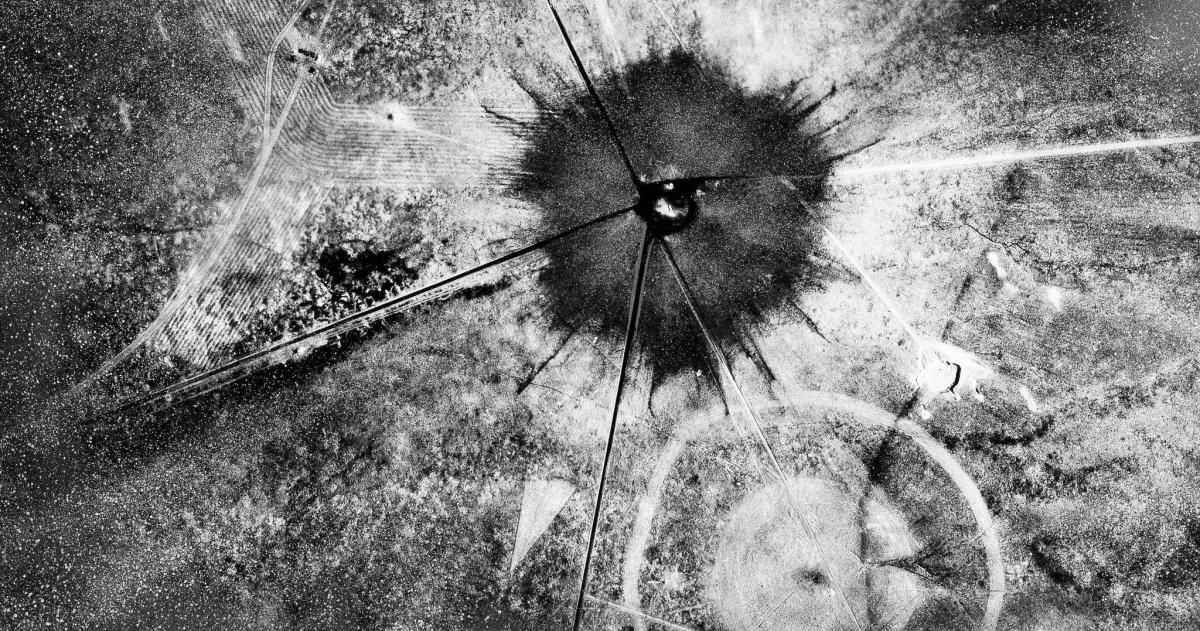
It was 1 a.m. on July 16, 1945, when J. Robert Oppenheimer met with an Army lieutenant general, Leslie Groves, in the parched landscape of Jornada del Muerto — Dead Man’s Journey — a remote desert in New Mexico.
A group of engineers and physicists was about to detonate an atomic device packed with 13 pounds of plutonium, a nuclear weapon that the government hoped would bring an end to World War II.
Some scientists on the project worried that they were about to light the entire world on fire, according to researchers. Others worried that the test would be “a complete dud.”
Mr. Oppenheimer, who was tasked with designing an atomic bomb for the Manhattan Project, had not slept.
At 5:29 a.m. local time, the device exploded with a power equivalent to 21,000 tons of TNT and set off a flash of light that would have been visible from Mars, researchers said.
It was the first nuclear test in history.
Less than a month later, the United States would drop a nearly identical weapon on the city of Nagasaki in Japan.
In their own words: Trinity at 75
On July 16, 1945 the first nuclear bomb exploded near Alamogordo, New Mexico. The Trinity test marked the culmination of nearly four years of secret research led by an unprecedented collaboration of the world’s top scientists and the US military. It also guaranteed that the uranium gun-type weapon dropped on Hiroshima could be followed by another that used the plutonium implosion design tested at the Trinity Site. In essence, Trinity was a test-of-concept for the bomb that leveled Nagasaki.
The history of the Manhattan Project and the birth of the bomb have been examined and reexamined countless times over the past seven decades—as have the threats they posed to humanity.Though nearly all now are dead, many scientists, soldiers, and family members who attended the birth of the bomb documented their first-hand experiences in the pages of the Bulletin in a way that lives on, providing an exceptional and vivid glimpse of their struggles to achieve victory in war and science.
Read together, the eyewitness excerpts below offer a new retelling of the Trinity test, woven entirely from words that more than a dozen of the project’s protagonists first published in the Bulletin.
SUITABLE GROUND: ALAMOGORDO
Lt. Gen. Leslie R. Groves
Groves was the Army administrative officer in charge of the entire wartime Manhattan Project. Scientists at Los Alamos loathed his policy of “compartmentalization,” which aimed to isolate scientists to preserve secrecy.
In the early days, we believed that a gun-type bomb would be entirely satisfactory for both uranium-235 and for plutonium, and we did not feel that any full-scale test would be necessary. Later, when we learned that the gun-type would not be suitable for plutonium, we began to realize that we might find it advisable to test the implosion-type bomb. … As soon as a full-scale test—and it had to be full-scale—became likely, we began the search for a suitable testing ground.
Church Rock Uranium Spill July 16, 1979
In 1968, the United Nuclear Corporation initiated mining operations in the largest underground uranium mine in the United States. Located in Church Rock, New Mexico, in the Navajo Native American Reservation, the Church Rock Mill produced more than two million pounds of uranium oxide per year. Waste from the mining process was disposed of in three lined lagoons fortified by a man-made dam built on geologically unsound land—of which both the United Nuclear Corporation and state and federal agencies were aware. On 16 July, 1979, the dam breached and 1100 tons of uranium waste and 94 million gallons of radioactive water seeped into the Puerco River. Scientists estimate that the amount of radiation released in the Church Rock uranium mill spill was larger than the amount released at Three Mile Island, just four months prior. Surrounding residents of the mill, almost entirely Navajos, relied on the Puerco River as a watering source for livestock. They have since suffered severe health problems due to substantial increases in radioactivity found in the water, soil, and air. Despite several selective investigations and cleanup efforts by the US Environmental Protection Agency, ramifications of the spill remain evident in the Navajo Nation today.
From environmentandsociety.org
Interview with Larry King, who worked on-site at the United Nuclear Corporation mine the day of the tailings pond spill, and still lives in the area.
Church Rock SPECIAL Encore presentation on the 1979 #Radioactive #Uranium tailings pond spill in #NavajoNation that spread #Radiation thru 80 miles of the Puerco River & still hasn't been cleaned up. Interviews w/elders, activists, politicians. https://t.co/xvIcjd5jGu pic.twitter.com/MLQwY9BP2V
— Libbe HaLevy (@NuclearHotseat) July 14, 2020
Nuclear Hotseat Podcast episode on the Church Rock Spill
Escalation by Tweet: Managing the new nuclear diplomacy
Can a tweet start a nuclear war? New Report examines impact of Twitter on crisis escalation and recommends a “no tweeting policy” during crises.
[embeddoc url=”https://www.kcl.ac.uk/csss/assets/10957•twitterconflictreport-15july.pdf” download=”all” viewer=”google”]
Atomic Anniversary Brings U.S. Nuclear Official to New Mexico
“Los Alamos is facing of a 2026 deadline to begin producing at least 30 of the plutonium cores a year — a mission that has the support of the most senior Democratic members of New Mexico’s congressional delegation as the work is expected to bring jobs and billions of federal dollars to update buildings or construct new factories. The effort has drawn much criticism from watchdog groups that long have been concerned about the lab’s safety record, missed deadlines, repeated cost overruns and the pace of cleaning up contamination resulting from decades of bomb making and nuclear research.”
BY: SUSAN MONTOYA BRIAN | apnews.com
ALBUQUERQUE — The head of the National Nuclear Security Administration is in New Mexico this week as part of a nationwide tour of the federal government’s nuclear security operations.
The visit by Administrator Lisa Gordon-Hagerty coincides with the 75th anniversary of the Trinity test in Southern New Mexico, which marked the world’s first atomic blast on July 16, 1945. She’s scheduled to lead a commemoration Thursday at the historic V-Site at Los Alamos National Laboratory, where early testing and some assembly of the atomic bomb took place.
Gordon-Hagerty has been spearheading the federal government’s recent efforts to resume and ramp up production of the plutonium cores that are used to trigger nuclear weapons. The work will be split between Los Alamos and the Savannah River Site in South Carolina.
Trinity Downwinders: 75 Years and Waiting
Tularosa Basin Downwinders Consortium (TBDC)
REMEMBERING THE 75TH ANNIVERSARY OF THE TRINITY TEST
*** I M M E D I A T E P R E S S R E L E A S E ***
Thursday, July 16, 2020
Virtual Event at 9:00 a.m. MDT
Access at www.trinitydownwinders.com
Trinity Downwinders are commemorating the 75th Anniversary since the first nuclear test was conducted anywhere in the world and bringing attention to the fact that New Mexicans still have not received Radiation Exposure Compensation Act (RECA) benefits.

RECA was passed in 1990 by the US Government to provide health care coverage and compensation to downwinders from other parts of the country but has never included the people of New Mexico. The fund has paid out over 2.3 Billion Dollars in reparations to downwinders of the Nevada Test site but never to New Mexico downwinders. It also provides the best health care coverage available.
Trinity Downwinders will commemorate the New Mexicans who have died from cancer and other radiation exposure related diseases during this event and read firsthand accounts of the bomb blast.
Funding Nuclear Weapons at a Time of National Crisis
Nuclear weapons represent the greatest imminent existential threat to our very existence and to every social, racial, environmental and economic justice movement that we are working for, since ultimately it is all connected.
BY: ROBERT DODGE | cpmmondreams.com
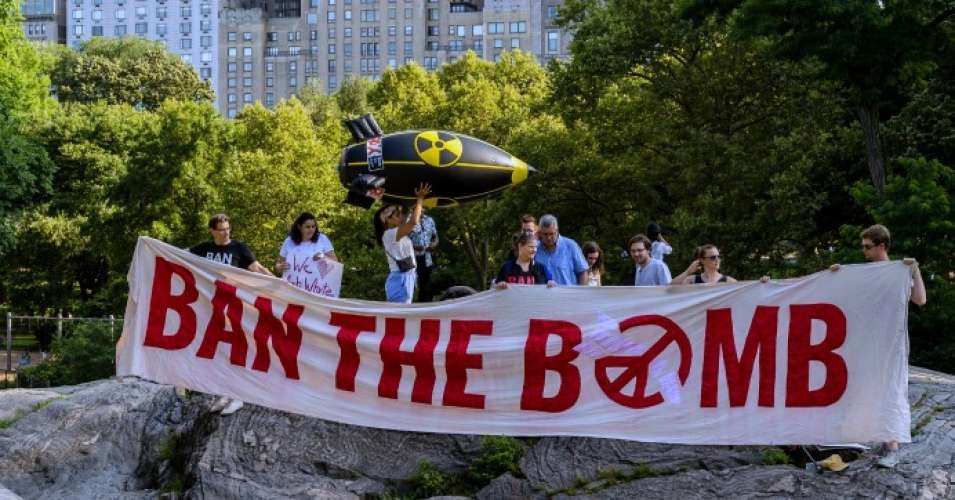
Today, July 15, we fund our nation’s priorities. This year, the nation is awakening to the problems of systemic and institutionalized racism while simultaneously grappling with the ongoing COVID-19 pandemic which has no end in sight. The Black Lives Matter movement is receiving its due attention and communities are demanding demilitarization of police forces and tactics and reprioritization of funding to address the needs of communities to bring forth a socially just, environmentally sustainable and peaceful community. City councils are taking a close look at police budgets and many citizens are calling for participatory budgeting with input in the budgets of their cities as they move to determine their own priorities. Nationally, with our massively bloated defense budget, it is also the time we fund the nuclear arms race even as nations around the world work to pass a nuclear ban treaty, the “Treaty on the Prohibition of Nuclear Weapons”, similar to those banning all other weapons of mass destruction.
15 LANL Workers Tested for Radiation Exposure After Mishap
“Mishandled glove boxes are a long-standing problem at the lab, but having 15 workers possibly exposed to radiation because of one breach is a high number and could become more common as the plutonium plant ramps up production of nuclear cores.” — Scott Kovac, research and operations director for nonprofit Nuclear Watch New Mexico.
“The 15 workers is just an example of things to come,” Kovac said.
“The 15 workers is just an example of things to come,” Kovac said.
BY: SCOTT WYLAND | santafenewmexican.com

publicintegrity.org
Fifteen employees at Los Alamos National Laboratory’s plutonium plant were tested for radiation exposure after a “glove box” breach in June contaminated the work area.
Air monitors sounded an alarm at the facility when an operator accidentally ripped off the protective gloves attached to a sealed compartment for handling plutonium after the worker weighed and packaged plutonium-238 oxide powder.
The breach contaminated the worker’s protective clothing, hair and skin, and caused enough potential airborne exposure that other workers had to be tested for radiation, according to a report by the Defense Nuclear Facilities Safety Board.
Trump Plan to Build Nuclear Bombs Divides a Scarred Factory Town
“To me, they haven’t proven that this is going to be safe,” said Pete LaBerge, a 70-year-old retiree who lives about three miles away from the Savannah River Site in nearby Windsor, which has 150 residents. He worries about a release of radiation. “Part of my theory is it’s sort of a make-work program for the Energy Department.”
BY: ARI NATTER & CHARLIE MCGEE | bloomberg.com
A factory along South Carolina’s Savannah River produced tritium and plutonium for U.S. nuclear weapons during the Cold War, employing thousands of workers but leaving behind a toxic legacy of radioactive waste.
Now the Trump administration has proposed spending $9 billion over 10 years to restart production of bomb parts there and at another site. The plan has raised the welcome prospect of new jobs though also rekindled environmental fears. And it’s set off alarms about a new nuclear arms race just as key treaties with Russia lapse.
“It’s a waste of money and dangerous,” said Stephen Young, an expert on arms control and international security issues for the Union of Concerned Scientists.
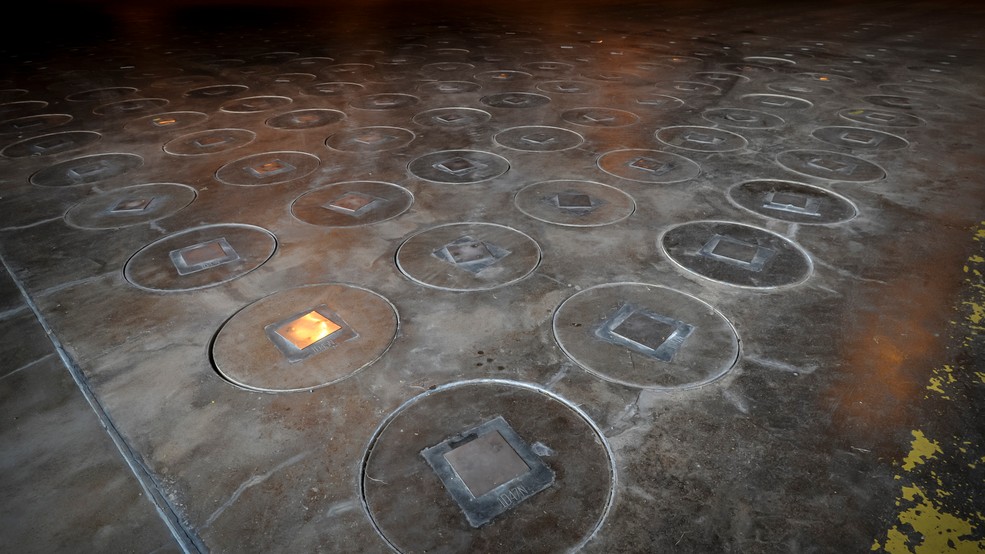
President Donald Trump’s plan, announced by the departments of Energy and Defense in 2018, calls for restarting production of nuclear bomb ‘pits’ at the South Carolina site and another one in New Mexico. The bowling-ball sized spheres of plutonium act as the trigger in a nuclear warhead, setting off the explosive chain reaction.
WIPP: Nuclear Watchdog Group Again Challenges Utility Shaft in New Mexico Supreme Court
The Southwest Research and Information Center previously filed a motion to the court in April, seeking to block the New Mexico Environment Department’s (NMED) temporary approval (TA) of plans for the shaft that saw no public hearing or comment process.
BY: ADRIAN HEDDEN | carlsbadcurrentargus.com
The $100 million project to build the shaft was intended to increase airflow to the WIPP underground, where transuranic (TRU) waste is permanently disposed of, to allow emplacement of waste and mining of panels where it is emplaced to occur simultaneously.
A nuclear watchdog group in Albuquerque filed two appeals in New Mexico Supreme Court last week, seeking to block the construction of a utility shaft at the Waste Isolation Pilot Plant.
‘Will to fight together’: Fiji’s has taken another bold step in the battle against nuclear weapons
“For many in the Pacific, memories of the impact of nuclear weapons testing still exist, its legacies continue, and the Pacific-wide solidarity that started in Fiji carries lessons for the world.”
Ratification of United Nations treaty banning atomic weapons honours a half-century of anti-nuclear activism
By: Vanessa Griffen & Talei Luscia Mangioni | theguardian.com

In the streets of Suva in the 1970s it was the young who carried the cause. In afros, headbands and bell-bottom jeans they handed out pamphlets and printed newsletters, performed skits and variety shows, gave lectures, and led rallies on the streets of Fiji’s capital.
Crowds heard firebrand speeches from church leaders, trade unionists, university staff and student leaders.
The Atom (Against Testing on Mururoa) committee, formed in Fiji in 1970, was dedicated to educating, creatively but powerfully, the Fijian public of the dangers of radioactive fallout from French testing and colonialism in the Pacific.
China Challenges the U.S. to Reduce Its Nuclear Arsenal to Same Level
BEIJING — If the United States were willing to reduce its nuclear arsenal to China’s level, China would “be happy to” participate in trilateral arms control negotiation with the U.S and Russia, a senior Chinese diplomat said on Wednesday.
REUTERS/NEW YORK TIMES | nytimes.com
The U.S. has repeatedly called for China to join in trilateral negotiations to extend a flagship nuclear arms treaty between the U.S. and Russia that is due to expire in February next year.
Fu Cong, head of arms control department of Chinese foreign ministry, reiterated to reporters in Beijing on Wednesday that China has no interest in joining the trilateral negotiation.
Senate Undoes Proposed Power Shift in Nuclear Arms Budgeting
Moves comes at the behest of the Energy secretary
BY: JOHN M. DONNELLY | rollcall.com
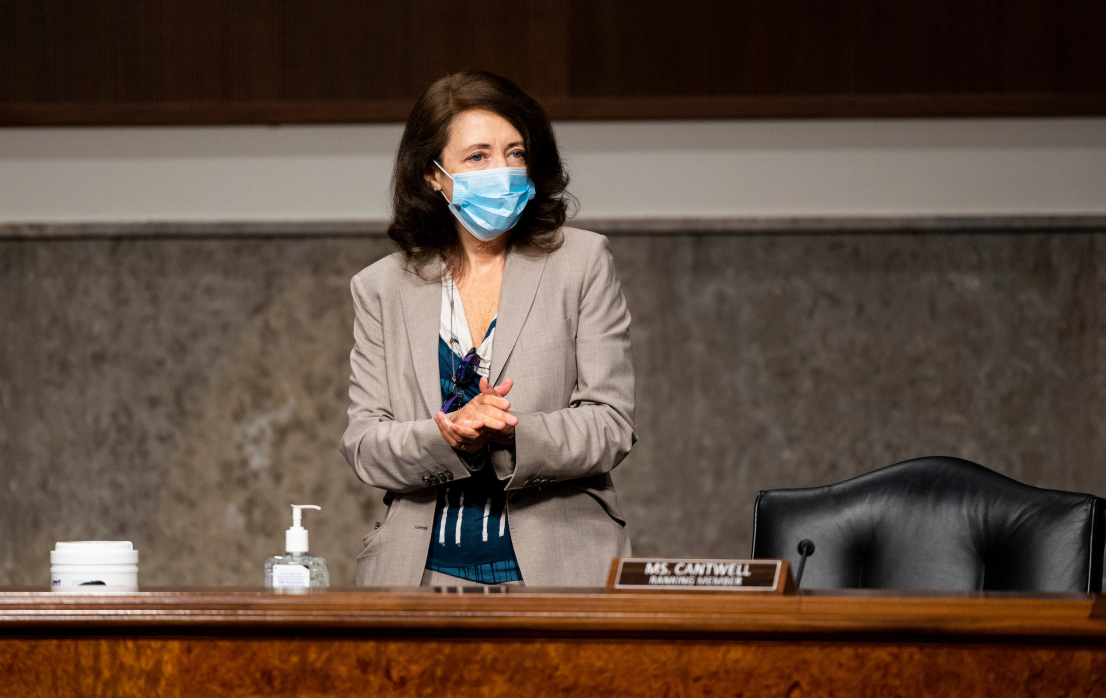
The Senate voted quietly Thursday to undo a proposal in its fiscal 2021 defense authorization bill that would have given the Pentagon extraordinary new power to shape the Energy Department’s future nuclear weapons budgets.
CQ Roll Call reported this week on behind-the-scenes opposition to provisions in the Senate Armed Services Committee’s version of the NDAA that would have given certain Defense Department officials new clout to set the amount and the content of the budget the Energy Department prepares for its National Nuclear Security Administration every year.
Appropriations Committee Releases Fiscal Year 2021 Energy and Water Development Funding Bill
“Policy Provision: The bill prohibits funding for nuclear weapons testing.”
FOR IMMEDIATE RELEASE
July 6, 2020
Contact:
Evan Hollander (Appropriations), 202-225-2771
Griffin Anderson (Kaptur), 202-225-4146
Legislation invests $49.6 billion in Energy and Water Development programs, an increase of $1.26 billion above the fiscal year 2020 enacted level, addressing climate change, improving infrastructure, and upholding our commitment to strengthening national security
In response to the economic recession caused by the coronavirus pandemic, legislation provides an additional $43.5 billion in emergency spending to repair water infrastructure and modernize energy infrastructure
WASHINGTON — The House Appropriations Committee today released the draft fiscal year 2021 Energy and Water Development and Related Agencies funding bill, which will be considered in subcommittee tomorrow. The legislation funds the U.S. Army Corps of Engineers, Department of the Interior programs, the Department of Energy, and other related agencies.
Fifteen LANL Workers Being Evaluated For Possible Exposure To Plutonium-238 Following June 8 Glovebox Glove Breach
Los Alamos National Laboratory is investigating the possible exposure of Laboratory employees to plutonium-238 after a breach in a glovebox glove at the Plutonium Facility on June 8.
BY: MAIRE O’NEILL | losalamosreporter.com
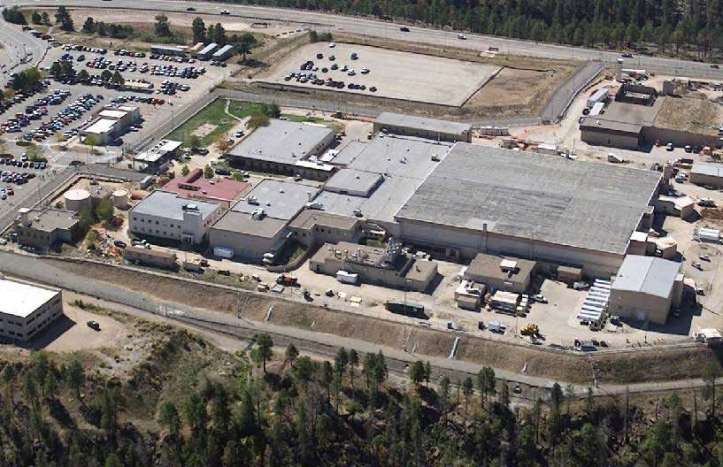
A Lab spokesperson told the Los Alamos Reporter Monday that employees responded promptly and appropriately, and cleared the room in a safe manner.
“Fifteen Laboratory workers are being evaluated for potential exposure. The area inside the Plutonium Facility where this occurred has been secured, pending a review of the events and there is no risk to public health and safety,” the spokesperson said.
A report by Defense Nuclear Facility Safety Board inspectors Jonathan Plaue and David Gutowski dated June 12 noted that on June 8 continuous air monitors sounded when an operator pulled out of the glovebox gloves after weighing and packaging plutonium-238 oxide powder.
“The worker received significant contamination on his protective clothing, hair, and skin, as well as positive nasal swabs indicating a potential intake. Radiation protection personnel successfully decontaminated the individual, and he was provided chelation therapy,” the report states. “The room experienced significant airborne radioactivity and was contaminated. Fourteen additional workers were placed on bioassay. On Thursday (June 11), Triad management conducted a fact-finding to discuss the event, response, and near-term actions. Given the significance of the event, they chartered a team to perform a comprehensive investigation.”
House Panel Would Block Pentagon From Extra Sway Over Nuclear Weapons Budget
The bill would bar funding for the Pentagon-led Nuclear Weapons Council, and would prevent it from assisting with the budget of the National Nuclear Security Administration, a semiautonomous agency under the Energy Department.
BY: JOE GOULD | defensenews.com
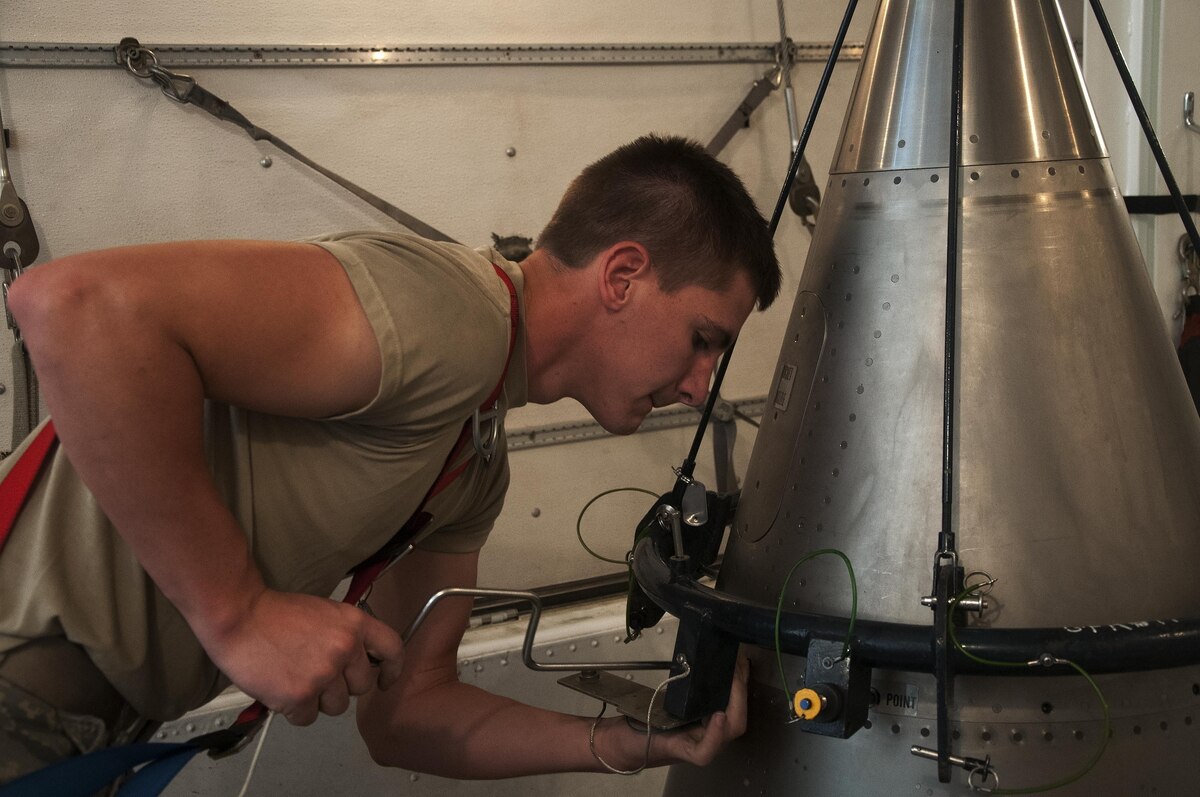
WASHINGTON ― House appropriators on Tuesday approved a spending bill that would block plans from defense hawks to give the Pentagon a stronger hand in crafting nuclear weapons budgets.
The House Appropriations Committee passed their Energy-Water bill, which contained the provision, by a voice vote. The $49.6 billion spending bill contained $13.7 billion for nuclear weapons accounts ― a $1.2 billion increase over fiscal 2020 that’s still $1.9 billion less than the president’s request.
Lead Republicans voiced opposition to the bill, arguing that Democrats had not consulted with Republicans on pandemic emergency funds in the bill and that Democrats included policy riders the White House will seek to cut. The top Republican on the House Energy and Water Development, and Related Agencies Subcommittee, Rep. Mike Simpson of Idaho, said the bill “still shortchanges funding for the nuclear weapons program.”
“While I acknowledge the increase above last year, we must also acknowledge that the threats we face today are not the same threats we faced in the years immediately following the end of the Cold War,” he said. “We must adequately fund the activities necessary to maintain a safe, reliable and effective stockpile.”
The bill would bar funding for the Pentagon-led Nuclear Weapons Council, and would prevent it from assisting with the budget of the National Nuclear Security Administration, a semiautonomous agency under the Energy Department.
The Senate Armed Services Committee’s version of the annual defense policy bill would allow the council to edit the budget request after the Energy Department crafts it and before the request is submitted to the White House budget office. The move was seen as giving the Pentagon extra sway to boost warhead programs and nuclear weapons laboratories.
Its introduction came after Energy Secretary Dan Brouillette clashed with SASC Chairman Jim Inhofe, R-Okla., who backed a budget request for the larger number than Brouillette sought.
The Energy-Water spending bill contains language ordering no funds “may be used in furtherance of working through the Nuclear Weapons Council to guide, advise, assist, develop, or execute a budget for the National Nuclear Security Administration.”
Separately, the proposed bill would ban the Trump administration’s reported plan to resume nuclear weapons testing. The bill would prohibit funding “to conduct, or prepare to conduct, any explosive nuclear weapons test that produces any yield.”
“Critically, the bill would prevent the Trump administration from using any funds to carry out its dangerous and short-sighted plan to resume nuclear testing,” House Appropriations Committee Chairwoman Nita Lowey, D-N.Y., said in a statement.
The Trump administration was reportedly discussing whether a “rapid test” could aid it in negotiations with Russia and China, as the White House seeks a trilateral nuclear weapons pact.
The defense appropriations bill introduced Tuesday would also bar funding for explosive nuclear weapons tests.
GROUPS ASK TO RESUME PUBLIC MEETINGS ON BOMB PLANT
Kathy Helms
Nuclear News Archives – 2021
Nothing Found
It seems we can’t find what you’re looking for. Perhaps searching can help.


